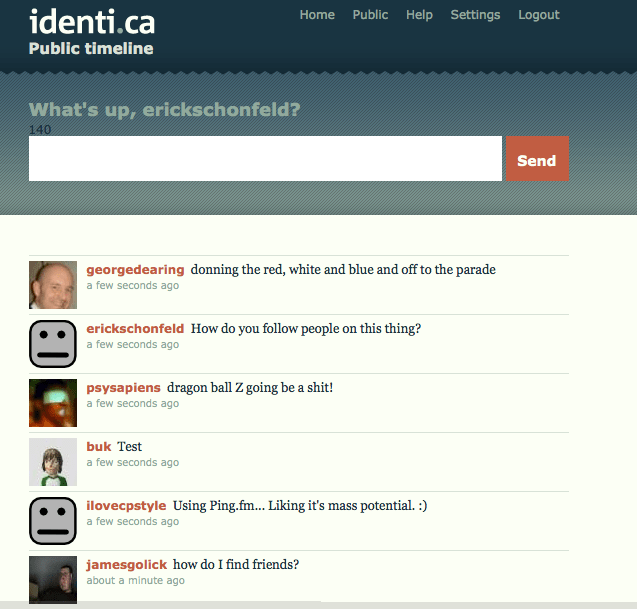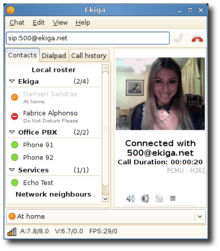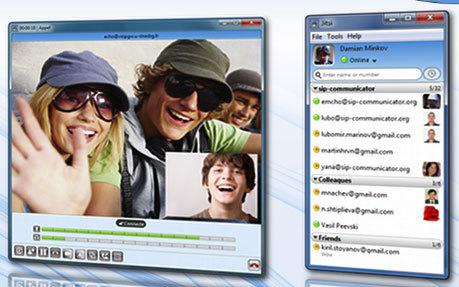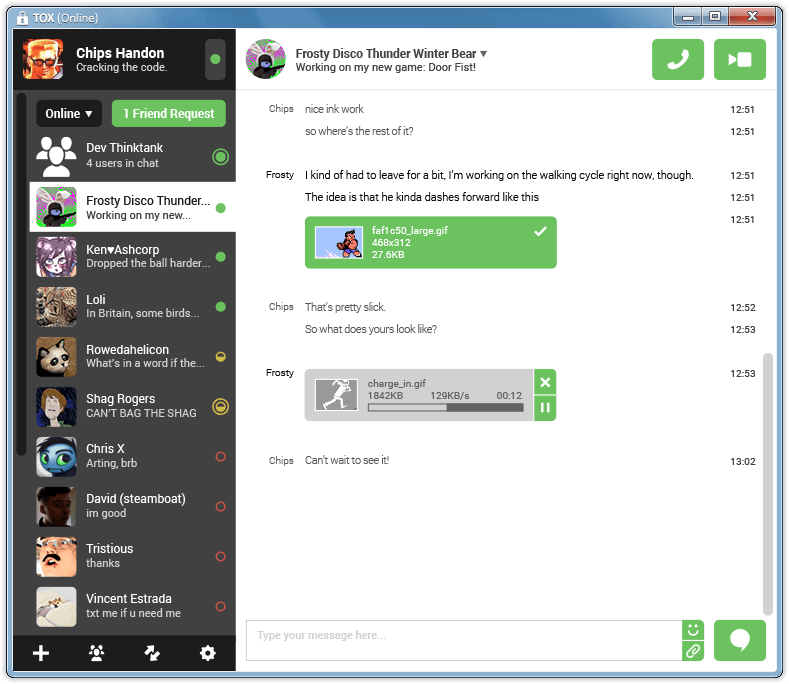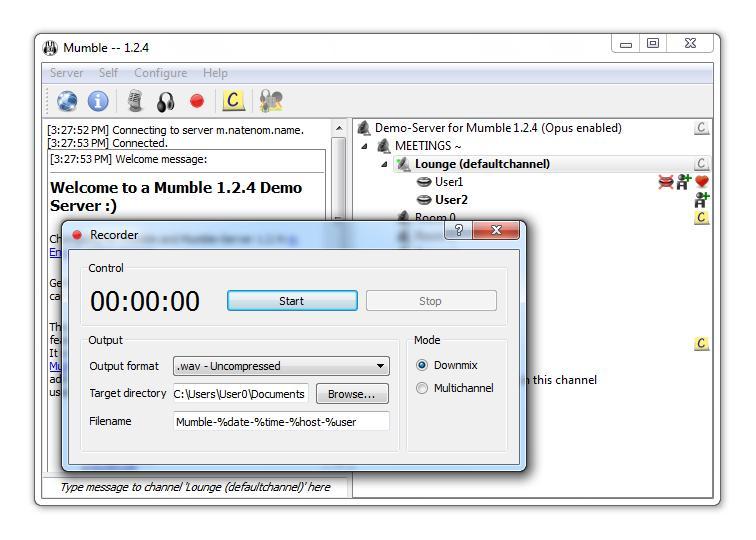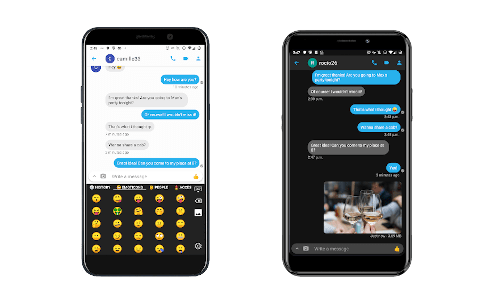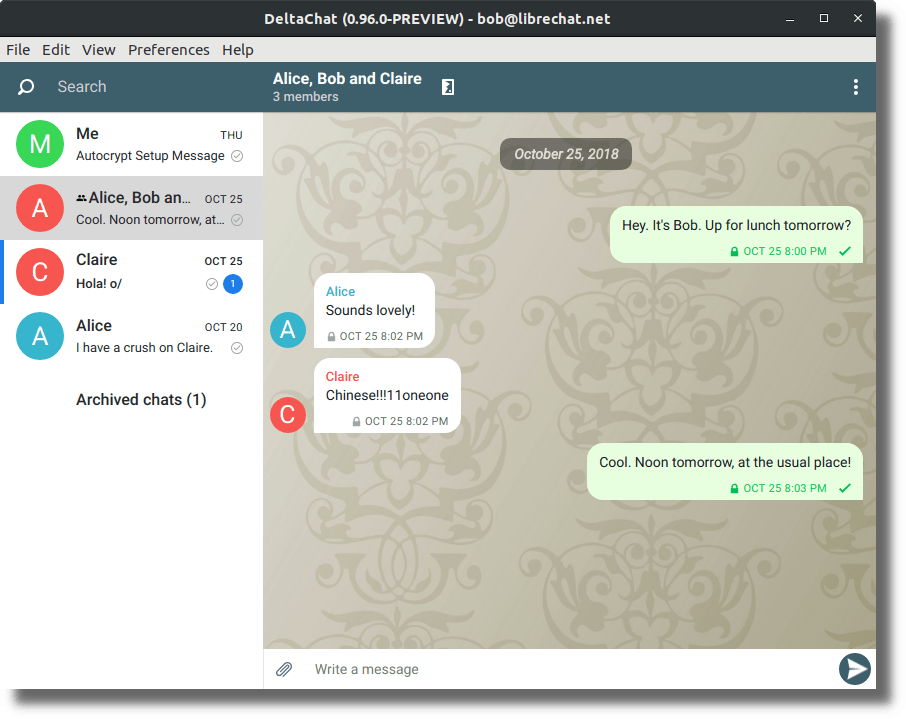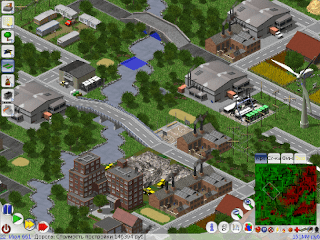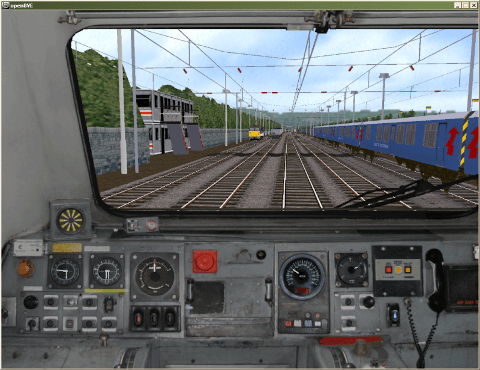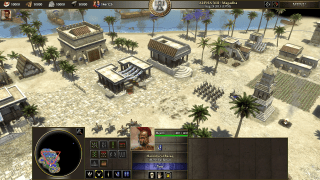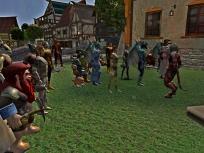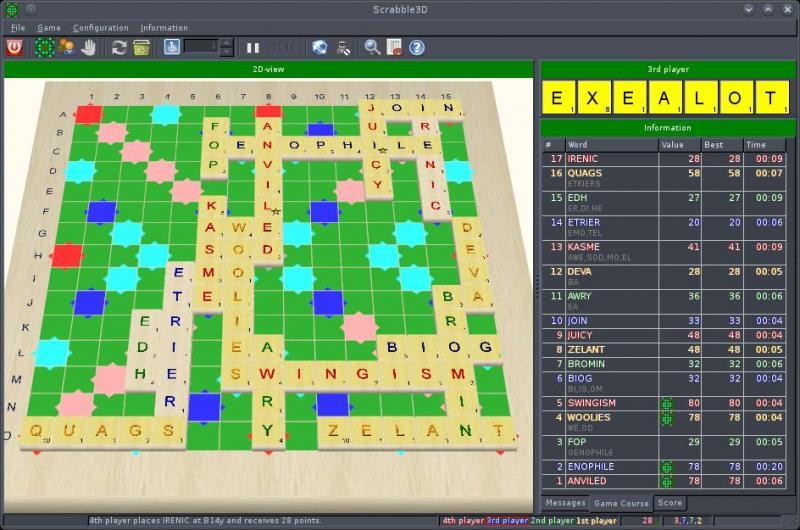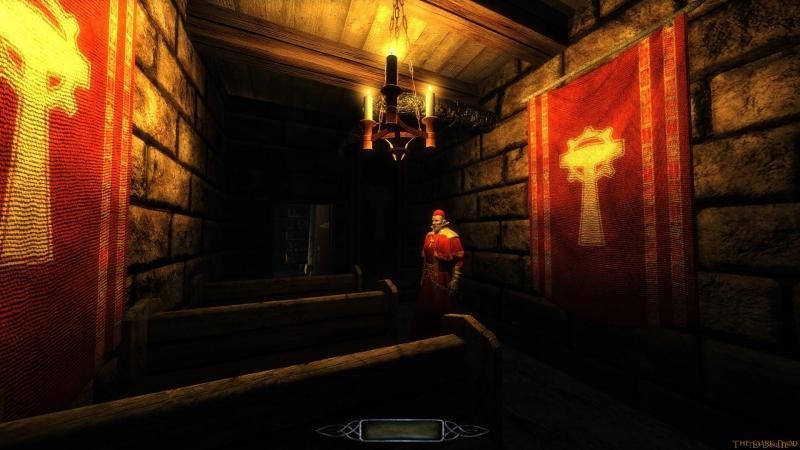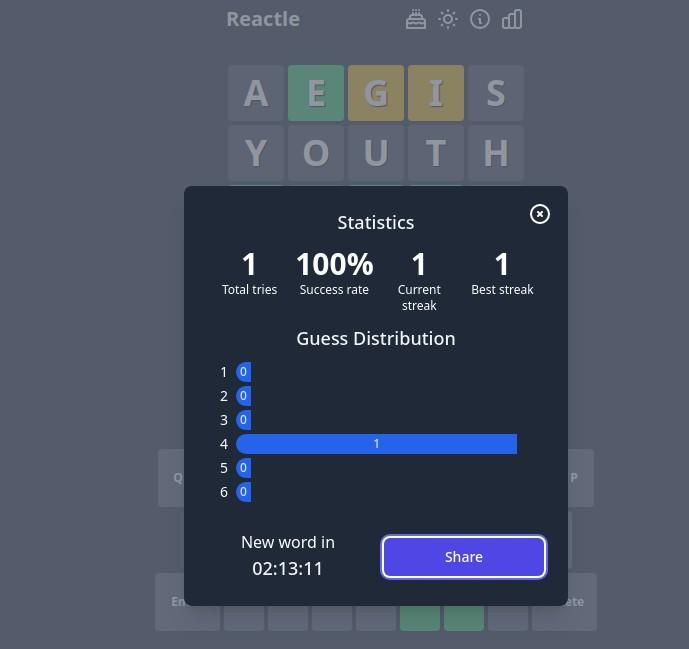Table of Contents
- Wordprocessing / Documents Management / Reading
- Libraries
- Web Development / Computer Programming / Blogging
- Knowledge Management
- Databases
- Helpdesk
- Customer Relationship Management (CRM)
- Customer Self-Help Forums
- Browsers
- E-Mail and Collaboration
- Decentralised Social Networking
- Security
- Utilities
- Education
- Network / Performance / Asset Management
- Private Cloud Computing
- Instant Messengers / Telephony
- Project Management
- GIS / Navigation
- Graphics / Video / Photo Editing
- Sound / Audio
- Finance / Business
- Games
- Operating Systems
- Television / Broadcasting / Streaming
- Government
- Health
- Fitness and Exercise
- Computer Aided Design (CAD)
- Home Automation
- Miscellaneous
Open source software is software with source code that anyone can inspect, modify, and enhance. Its authors make its source code available to others who would like to view that code, copy it, learn from it, alter it, or share it. In general, open source licenses grant computer users permission to use open source software for any purpose they wish. Some open source licenses — what some people call “copyleft” licenses — stipulate that anyone who releases a modified open source program must also release the source code for that program alongside it. Moreover, some open source licenses stipulate that anyone who alters and shares a program with others must also share that program’s source code without charging a licensing fee for it.
Some software has source code that only the person, team, or organization who created it — and maintains exclusive control over it — can modify. People call this kind of software “proprietary” or “closed source” software.
There are pro’s and con’s for both proprietary and open source software. It is a question of the right tool for the job. Open source is not necessarily free of cost! Some open source software will be hosted online at a monthly cost (that is for the hosting and support cost, not the software), and sometimes a paid service level agreement is optionally available for support. Self-hosting though of open source softwtare is usually free. I see great opportunities for levelling the playing fields in the South African IT industry, and believe that open source will enable small IT companies in South Africa to provide win-win solutions.
Note, I have also included some Freeware software (free to use, but source code not distributed, so it is free to use but not free to modify).
Most of the software below runs on both Windows and Linux, as well as other operating systems…. why tie yourself to one OS? Interoperability is really key if you want the freedom to later be able to change operating systems.
Corporate and Government users should be aware though that they should always vet the use of any software with their CIO’s before use. Also beware of OpenCore software where very basic core functionality is available as FOSS but everything else is a commercial release.
I’ve featured a number of different open source software projects in my awareness videos in a YouTube playlist here. They give an overview of the look and feel of the software, and I try to add new videos as I come across something interesting.
See my Open Letter to South African BEE / SME Vendors
Do I Really Need Microsoft Office at Home?
Open Source is Secure and Mature
This page is automatically archived at The Internet Archive at https://web.archive.org/web/20240000000000*/https://gadgeteer.co.za/opensourcesoftware/
Wordprocessing / Documents Management / Reading
OpenOffice – open-source office software suite for word-processing, spreadsheets, presentations, graphics, databases (recently given to the Apache Software Foundation by Oracle). It is available in many languages and works on all common computers. It stores all your data in an international open document format standard (ISO approved ODF) and can also read and write files from other common office software packages. It can be downloaded and used completely free of charge for any purpose. Replacement for Microsoft Office (looks similar to Office 2003) and will read / write MS Office 2007 documents. Works on Windows, Linux, and macOS.
LibreOffice – a breakaway fork from OpenOffice as an alternative to OpenOffice. It is currently more up to date and active than the OpenOffice project, and has also been adopted as in the place of OpenOffice by Linux Distro’s such as Ubuntu. LibreOffice will assist with word processing, spreadsheets, presentations, charts, drawing, flow charts and more.
OnlyOffice – an open source alternative to MS Office which claims 100% compatibility with MS Office format documents. It also creates and edits ODF and has a server based collation functionality. It also powers sites such as CryptPad.
Scribus – an Open Source program that brings award-winning professional page layout and desktop publishing to Linux/UNIX (inc AppImage), Mac OS X (inc Apple Silicon), OS/2 Warp 4/eComStation, FeeBSD, and Windows desktops with a combination of “press-ready” output and new approaches to page layout. Underneath the modern and user friendly interface, Scribus supports professional publishing features, such as CMYK color, separations, Spot Colors, ICC color management and versatile PDF creation. Scribus has many unexpected touches, such as powerful vector drawing tools, support for a huge number of file types via import/export filters, emulation of color blindness or the rendering of markup languages like LaTeX or Lilypond inside Scribus. The Scribus file format is XML-based and open. Unlike proprietary binary file formats, even damaged documents can be recovered with a simple text editor – sometimes a challenging problem with other page layout programs.
Etherpad – open source online editor providing collaborative editing in real-time. Etherpad is often embedded into team chat type services like Slack to allow for many people to simultaneously edit the same document. This could be to collaborate on getting a business case done, drafting a policy, etc. There are free hosted sites to try out Etherpad such as at http://board.net/ and also one that does shared spreadsheets at https://ethercalc.org/ called EtherCalc.
HedgeDoc (formerly known as CodiMD) – an open-source, web-based, self-hosted, collaborative markdown editor. You can use it to easily collaborate on notes, graphs and even presentations in real-time. All you need to do is to share your note-link to your co-workers and they’re ready to go.
Joplin – an open source note taking and to-do application with synchronisation capabilities for Windows, macOS, Linux, Android and iOS. The notes are in Markdown format which means you can use any other markdown text editor to work with them.
BookStack – a simple, self-hosted, easy-to-use platform for organising and storing information. The page editor has a simple WYSIWYG interface and all content is broken into three simple real world groups: Books, Chapters, and Pages. If you prefer to write in Markdown then BookStack supports you. A markdown editor is provided and includes a live-preview as you write your documentation.
Zoho Office Suite Online – Zoho offers a suite of online web applications geared towards increasing your productivity and offering easy collaboration. Zoho’s online office tools include a word processor, spreadsheet application, presentation tool, hosted wiki, notebook, CRM, chat, projects, etc. Far more features than Google and it will be integrated into the mobile version of Ubuntu 10.04.
EGroupware – an open source alternative to Microsoft 365 that runs in your favourite web browser. Apart from its own modules, EGroupware integrates other well-known open source applications, including Collabora Online, Rocket.Chat, Guacamole, Jitsi, and BigBlueButton. The groupware also supports computer telephony integration (CTI) with Asterisk/Placetel. The free Community Edition (CE) is developed under the GPLv2 and contains basic functions without limitations.
AbiWord – a free light weight word processing program similar to Microsoft Word. Much simpler and quicker though than OpenOffice or MS Office.
LyX – a document processor that encourages an approach to writing based on the structure of your documents (WYSIWYM) and not simply their appearance (WYSIWYG).
PDFCreator – an application for converting documents into Portable Document Format (PDF) format on Microsoft Windows operating systems. It works by creating a virtual printer that prints to PDF files, and thereby allows practically any application to create PDF files by choosing to print from within the application and then printing to the PDFCreator printer. Encrypt your files with AES and up to 128 Bit. Digitally sign your documents to verify you as the author and protect the file against modifications.
PDFedit – a free open source pdf editor and a library for manipulating PDF documents. PDFedit lets you edit text, delete and renumber pages, add markup, etc.
Xournal++ – allows you to write, draw, and do everything you usually do on paper. It supports handwriting, custom pen with highlighter, eraser, etc. The support for Layers, multi-page features, add external images, add audio are few to mention among its great list of features. It can also import and annotate PDF documents. This application support almost all pressure-sensitive tablets, including Wacom, Huion, XP-Pen. It installs on Linux, macOS, Windows and Android, with an iOS app still in the works.
Rnote – an excellent application for taking handwritten notes via touch devices. This application is vector image-based and helps to draw, annotate pictures and PDFs. It brings native .rnote file format with import/export options for png, jpeg, svg and PDF. One of the cool features of Rnote is that it supports Xournal++ file format support.
Lorien – a perfect digital notebook software for your ideation sessions where you can create notes with its various tools. Lorien is a cross-platform, free and open-source “infinite canvas drawing/note-taking” app based on Godot Game Engine. This app is a perfect fit for taking quick notes for brainstorming sessions.
Foxit Reader – multi-platform PDF reader which is smaller in download size and regarded as more secure than Adobe’s Acrobat Reader.
Stickies – free sticky notes software that even works on Vista. Has features such as alarms, send to friends via e-mail or network, etc.
PNotes – sticky notes for Windows with nice skins.
RedNotebook – is a modern journal that includes a calendar navigation, customizable templates, export functionality and word clouds. You can also format, tag and search your entries. RedNotebook is Free Software under the GPL
Zotero – is reference management software. Zotero is used to manage bibliographies and references when writing essays and articles. On many major research websites such as digital libraries, PubMed, Google Scholar, Google Books, Amazon.com, and even Wikipedia, Zotero detects when a book, article, or other resource is being viewed and with a mouse click finds and saves the full reference information to a local file. If the source is an online article or web page, Zotero can optionally store a local copy of the source. Users can then add notes, tags, and their own metadata through the in-browser interface.
WIKINDX – a free Virtual Research Environment (an online bibliographic and quotations/notes management and article authoring system) designed either for single use (on a variety of operating systems) or multi-user collaborative use across the internet.
Bibisco – cross-platform fully featured novel-writing tool for writers. With bibisco you can organize chapters and scenes, manage revisions, export novel in pdf or rtf, and write with a fully featured text editor. You can create a novel structure, define premise, fabula, narrative strands and settings: geographic, temporal and social context.
Manuskript – cross-platform fully featured novel-writing tool for writers. The snowflake method can help you grow your idea into a book, by leading you step by step and asking you questions to go deeper. While writing, keep track of notes about every characters, plot, event, place in your story.
Evince – a Linux document viewer for multiple document formats. It currently supports pdf, postscript, djvu, tiff and dvi. The goal of evince is to replace the multiple document viewers that exist on the GNOME Desktop with a single simple application.
Calibre – a free and open source e-book library management application developed by users of e-books for users of e-books. It has a cornucopia of features divided into the following main categories: Library Management, E-book conversion, Syncing to e-book reader devices (such as the Kindle), Downloading news from the web and converting it into e-book form, Comprehensive e-book viewer, and Content server for online access to your book collection. See how to Download Entire Newspapers or Blogs To Your eBook Reader With Calibre.
Standard Ebooks – a volunteer-driven effort to produce a collection of high quality, carefully formatted, accessible, open source, and free public domain ebooks that meet or exceed the quality of commercially produced ebooks. Standard Ebooks takes ebooks from sources like Project Gutenberg, formats and typesets them using a carefully designed and professional-grade style manual, fully proofreads and corrects them, and then builds them to create a new edition that takes advantage of state-of-the-art ereader and browser technology.
Bookwrym – an open source self-hosted alternative to GoodReads. You can host it yourself or join an existing instance and just use it. It federates across the whole Fediverse of networks.
Sigil – a multi-platform EPUB ebook editor.
Liferea (Linux Feed Reader) – an aggregator for online news feeds. There are many other news readers available, but these others are not available for Linux or require many extra libraries to be installed. Liferea tries to fill this gap by creating a fast, easy to use, easy to install news aggregator for Gtk/Gnome. It can also sync with a Google Reader account. You could also look at Snackr scrolling RSS feed which is a free Adobe Air application that works across Windows, Linux an Mac OS X.
Cuneiform – an OCR system. In addition to text recognition it also does layout analysis and text format recognition. There is also a Windows version. Ephesoft – capture solutions enable business and government organizations to maximize the value of their documents and data. Ephesoft reliably eliminates the tedious and error-prone manual steps often used to classify and separate documents, extract data elements, validate this data via other systems and then seamlessly integrate with your ERP, ECM, or workflow system. Ephesoft uses a unique approach to content classification and does not rely on templates or hard coding of forms. Will be used as part of an ECM solution for bulk scanning for the South African government.
ICA-AtoM – stands for “International Council on Archives – Access to Memory”. It is a web-based, open source application for standards-based archival description in a multilingual, multi-repository environment.
Alfresco – Alfresco is an enterprise content platform (ECM) that you can use in the cloud or behind your firewall. It helps you store and share the documents that every business depends on. Alfresco is built for the portability of the tablet and the power of the cloud. In use at South Africa’s State IT Agency, National Archives, and a number of other SA Government Departments.
LanguageTool – a free proofreading tool for English, German, Spanish, Russian, and more than 20 other languages. An excellent alternative to Grammerly.
Wallabag – self-hosted alternative to Pocket and Instapaper bookmarking services. See my video overview of Wallabag here.
Linkwarden – a self-hosted, open-source collaborative bookmark manager to collect, organize and archive webpages. The objective is to organize useful webpages and articles you find across the web in one place, and since useful webpages can go away (see the inevitability of Link Rot), Linkwarden also saves a copy of each webpage as a Screenshot and PDF, ensuring accessibility even if the original content is no longer available. Additionally, Linkwarden is designed with collaboration in mind, sharing links with the public and/or allowing multiple users to work together seamlessly.
FreshRSS – a self-hostable RSS news aggregator. Easily installed in a Docker container. See my video.
Tiny Tiny RSS – a free and open source web-based news feed (RSS/Atom) reader and aggregator, also easily instable within a Docker container. See my video.
LinkAce – a free and open source self-hostable web bookmark archive. All saved links are monitored. Get a notification when a website moves or becomes unavailable. Links are backed up via the Internet Archive after you saved them. Choose tags to categorize links, add them to custom lists to group them by a topic or occasion.
Libraries
Libra – organise all your DVD’s, books, movies, games – also uses your webcam to scan barcodes. This is free to use but does not appear to be open source software.
Koha – an advanced open-source Integrated Library System in use today by hundreds of libraries worldwide.
BiblioteQ – a professional archiving, cataloguing, and library management software that utilizes Qt for an eye-pleasant user interface. Furthermore, it uses PostgreSQL and SQLite for the databases. While speaking of connectivity, it uses Open Library, SRU, and Z39.50 protocols to have a seamless experience while retrieving books and other archive options.
Invenio’s ILS (Integrated Library System) – uses the Invenio framework, which is made up of widely used open-source products including Python and React frameworks. So if you have the technical expertise, there will be no boundaries on customisation and enhancements that you can do with the default base.
Evergreen – an open source Integrated Library System (ILS), initially developed by the Georgia Public Library Service for Public Information Network for Electronic Services (PINES), a statewide resource-sharing consortium with over 270 member libraries.
SLiMS (Senayan Library Management System) – nothing but an Apache web server bundled with MySQL and PHP, and the outcome is an extremely powerful community-driven library management toolkit. From serial publication control to system modules providing extreme flexibility, SLiMS has a lot to offer.
FOLIO (Future of Libraries is Open) – can be considered the best option in terms of user experience, as the community thrives to bring the best out of UI/UX elements. As with any other library management software, you’d get all the basic features such as circulation, acquisitions, cataloguing, and e-resources management. You also get a nice feature to manage multiple users, patron types, fee structures, and more.
OPALS (OPen-source Automated Library System) – one of the most highly rated library automation solutions available. It provides Web-based access to information databases, library collections and digital archives.
VuFind – a library resource portal designed and developed for libraries by libraries. The goal of VuFind is to enable your users to search and browse through all of your library’s resources by replacing the traditional OPAC.
LibX – an open source browser toolbar for Firefox and Chrome that you can customize to help patrons (and staff for that matter) find library resources while browsing. Once the LibX toolbar is installed it puts a search box for the library catalogue at the top of the user’s browser (no need to visit the library catalogue website).
Zotero – a citation management tool that allows you to save references to your computer for easy access and bibliography creation. Zotero is the only research tool that automatically senses content in your web browser, allowing you to add it to your personal library with a single click. Whether you’re searching for a preprint on arXiv.org, a journal article from JSTOR, a news story from the New York Times, or a book from your university library catalogue, Zotero has you covered with support for thousands of sites.
Kete – turns the traditional digital library inside out by allowing the library to host and moderate the content added by community members. It can store images, text, photos, audio, etc with related links and topics. It is ideal for heritage museums and archives to consider using.
Paperless-ngx – a self-hosted document management system that transforms your physical documents into a searchable online archive so you can keep, well, less paper. See my video about it at https://www.youtube.com/watch?v=urwuTnrYEWE.
Web Development / Computer Programming / Blogging
KompoZer – a complete Web Authoring System that combines web file management and easy-to-use WYSIWYG web page editing capabilities found in Microsoft FrontPage, Adobe DreamWeaver and other high-end programs. KompoZer is designed to be extremely easy to use, making it ideal for non-technical computer users who want to create an attractive professional-looking web site without needing to know HTML or web coding.
Drupal – a free and open source content management system (CMS) written in PHP and distributed under the GNU General Public License. It is used as a back-end system for at least 1% of all websites worldwide ranging from personal blogs to larger corporate and political sites including whitehouse.gov and data.gov.uk. It is also used for knowledge management and business collaboration. Although Drupal offers a sophisticated programming interface for developers, no programming skills are required for basic website installation and administration.
Ghost – a fully open source blogging platform.
WriteFreely – self-hosted, free and open source software for easily publishing writing on the web. Use it to start a personal blog — or an entire community. It is SEO-friendly, has RSS feeds, and will federate to the Fediverse using the ActivityPub protocol.
Open Atrium – an “Intranet in a box” that has group spaces to allow different teams to have their own conversations. It comes with six features – a blog, a wiki, a calendar, a to do list, a shoutbox, and a dashboard to manage it all. It is based on the Drupal framework.
Joomla – an open source content management system platform for publishing content on the World Wide Web and intranets as well as a model–view–controller (MVC) Web application framework. It is written in PHP, stores data in MySQL and includes features such as page caching, RSS feeds, printable versions of pages, news flashes, blogs, polls, search, and support for language internationalisation. Within its first year of release, Joomla was downloaded 2.5 million times. Over 5,000 free and commercial plug-ins are available for Joomla. I have found many small hosting services in South Africa (R25pm to R49pm and inclusive of .co.za domain name if you pay 12 months in advance) that provide cPanel which automates the creation of a Joomla website that can be easily edited via an online Articles Manager. I’ll soon be creating a page with one line instructions on how to get going quickly.
Discourse – discussion forum platform.
Eclipse – Java based IDE which aims to be a universal development toolkit.
Ruby on Rails – designed for rapid application development using Agile methodologies, Ruby on Rails offers “Web development that doesn’t hurt.” It’s used by the developers behind thousands of apps, including Twitter, Basecamp, Github and Groupon.
Qt – the full software development kit, C++ is the language, and Creator is the IDE as well as GUI builder included. This platform includes a complete set of code examples suitable for first learners. With Qt, one can create graphical desktop applications for GNU/Linux, Windows and macOS. Best examples of computer software created with Qt are among others Kubuntu, KDE, Telegram and VirtualBox.
Lazarus – Lazarus is the name of the IDE and the GUI designer, Pascal is the language, and Free Pascal is the compiler. Lazarus is often viewed as a replacement to Delphi, a visual language other than VB on Windows, however it is very capable to replace VB as well. Programs created with Lazarus can run on GNU, Windows and MacOS.
Python – an interpreted language that does not need to be compiled to run. Python is a good programming language for beginners as well as advanced programmers. It is a high-level language, which means a programmer can focus on what to do instead of how to do it. Writing programs in Python takes less time than in some other languages. Python is one of the world’s most popular programming languages. Python has a very easy-to-read syntax. Some of Python’s syntax comes from C, because that is the language that Python was written in. But Python uses whitespace to delimit code: spaces or tabs are used to organize code into groups. This is different from C. In C, there is a semicolon at the end of each line and curly braces ({}) are used to group code. Using whitespace to delimit code makes Python a very easy-to-read language.
Lift – an expressive and elegant framework for writing web applications. Lift stresses the importance of security, maintainability, scalability and performance, while allowing for high levels of developer productivity. Lift open source software licensed under an Apache 2.0 license. Because Lift applications are written in Scala, an elegant JVM language, you can still use your favourite Java libraries and deploy to your favourite Servlet Container. Use the code you’ve already written, and deploy to the container you’ve already configured! Foursquare, Zerox, Novell’s Pulse, eBay etc are using it in high web traffic environments.
Mono – an open source implementation of the Microsoft .NET Framework. It most powerful feature is that Mono allow the execution of .NET application on almost any platform – including (but not limited to) Mac OS X, Linux, Solaris.
mojoPortal – Create accessible, standards compliant web pages and content right in the browser. Out of the box, mojoPortal provides dynamic database driven web site(s) with an XHTML compliant Content Management System and community features like Blogs, Forums, Image Galleries, etc.
Evolutility – an open source generic web UI for database applications. With it you can create small web apps like an Address book, a To do list or even a Wine Cellar without writing any code.
Game Editor – is the open source game design software that gives you the power to create the games of your dreams, and, unlike other game creation tools, gives you the chance to get and change the source code of the game creator and design and develop 2D games for personal computers as well as mobile devices.
Godot – a free, all-in-one, cross-platform game engine that makes it easy for you to create 2D and 3D games. Use building blocks called nodes to create more complex and reusable scenes. Add scripts to your scenes and customise built-in behaviour to implement your unique game mechanics. Rely on composition and node hierarchy to make game logic clear at a glance.
jQuery Mobile – an HTML5-based user interface system designed to make responsive web sites and apps that are accessible on all smartphone, tablet and desktop devices.
jQT – a Zepto/jQuery plugin for mobile web development on the iPhone, Android, iPod Touch, and other forward-thinking devices.
NetBeans – quickly and easily develop desktop, mobile and web applications with Java, HTML5, PHP, C/C++ and more. NetBeans IDE is FREE, open source, and has a worldwide community of users and developers.
PhoneGap – a free and open source framework that allows you to create mobile apps using standardized web APIs for the platforms you care about. Supports 7+ mobile platforms.
ArgoUML – a leading open source UML modelling tool and includes support for all standard UML 1.4 diagrams. It runs on any Java platform and is available in ten languages. Also see Dia further down this page.
StarUML – designed as an alternative to Rational Rose and other commercial modelling tools, StarUML supports both the latest UML standards and Model Driven Architecture (MDA). Archi – Enterprise architecture modelling tool which is TOGAF compliant. Runs on Windows, Mac OS X, and Linux.
Gaphor – an Open Source Graphical Modelling Tool with support for various modelling languages such as UML, SysML, RAAML and C4. It’s not just a drawing tool. It implements a fully-compliant UML 2 data model. You can create highly complex models with Gaphor.
Mercurial – a cross-platform, distributed revision control tool for software developers in use by Mozilla, Symbian OS, OpenOffice, etc.
Git – a distributed revision control system with an emphasis on speed. Git was initially designed and developed by Linus Torvalds for Linux kernel development. Also used by Digg, GNOME, Amarok, GIMP, MeeGo, OpenSUSE, Linux Mint, VLC, etc.
VSCodium – is a community-driven, freely-licensed binary distribution of Microsoft’s editor VS Code. Microsoft’s vscode source code is open source (MIT-licensed), but the product available for download (Visual Studio Code) is licensed under this not-FLOSS license and contains telemetry/tracking. The VSCodium project exists so that you don’t have to download+build from source. This project includes special build scripts that clone Microsoft’s vscode repo, run the build commands, and upload the resulting binaries for you to GitHub releases. These binaries are licensed under the MIT license. Telemetry is disabled.
WordPress – an open source CMS, often used as a blog publishing application powered by PHP and. It has many features including a plugin architecture and a templating system. Used by over 300 of the 10,000 biggest websites, WordPress is the most popular blog software in use today.
Tiki – is a lot more than just a wiki. It also can do blogs, RSS feeds, could be a bug tracking system, (with web forms and reports), forums, calendar / events, file galleries, surveys, quizzes, and polls. But it is also extendable via 3rd party extensions.
Apache httpd – has been the most popular web server on the Internet since April 1996, and celebrated its 15th birthday as a project this February in 2010.
JBoss Application Server – the most widely deployed open source application server on the market. As a certified J2EE platform it supports all features of J2EE 1.4 including additional services such as clustering, caching and persistence. JBoss is ideal for Java applications and Web-based applications.
FitNesse – a web server, a wiki, and an automated testing tool for software. It is based on Ward Cunningham’s Framework for Integrated Test. FitNesse is designed to support acceptance testing rather than unit testing in that it facilitates a detailed readable description of system function. FitNesse allows users of a developed system to enter specially formatted input (its format is accessible to non-programmers). This input is interpreted and tests are created automatically. These tests are then executed by the system and output is returned back to the user. The advantage of this approach is very fast feedback from users.
Firebug – integrates with Firefox to put a wealth of web development tools at your fingertips while you browse. You can edit, debug, and monitor CSS, HTML, and JavaScript live in any web page. Inspect HTML and modify style and layout in real-time, use the most advanced JavaScript debugger available for any browser, accurately analyse network usage and performance of web applications.
Speedtracer – a tool to help you identify and fix performance problems in your web applications. It visualises metrics that are taken from low-level instrumentation points inside of the browser and analyses them as your application runs. Speed Tracer is available as a Chrome extension and works on all platforms where extensions are currently supported (Windows and Linux).
Bugzilla – A Perl based software bug tracking system which can also be used for help desk support. Used by the Mozilla Foundation, creators of FireFox.
JS Hero – Learn to code with JavaScript Hero! The tutorial with interactive exercises. JavaScript Hero wants to take you into the world of JavaScript programming. On each page you will find a small lesson and a small programming task. The task can be solved directly on the page. And you are immediately told if you have solved the problem correctly or if you have made a mistake. Try it out at http://www.jshero.net/en/home.html or see the source code at https://github.com/strenkel/jshero.
WhiteSource – detects all vulnerable open source components, including transitive dependencies, in more than 200 programming languages. It matches reported vulnerabilities to the open source libraries in code, reducing the number of alerts.
Shoutrrr – Notification library for gophers and their furry friends. Heavily inspired by caronc/apprise. Push application notifications in realtime out to various services such as Slack, Telegram, Teams, e-mail, Discord, Pushbullet, Rocketchat, and many more.
Penpot – the first Open Source design and prototyping platform meant for cross-domain teams. Non dependent on operating systems, Penpot is web based and works with open standards (SVG). Create beautiful user interfaces in collaboration with all team members. Maintain consistency at scale with components, libraries and design systems. Create rich interactions to mimic the product behaviour. Share to stakeholders, present proposals to your team and start user testing with your designs, all in one place.
Knowledge Management
BlueSpice – based on Wikipedia’s MediaWiki but its features go far beyond its noble ancestor. Code is on SourceForge.
Databases
MySQL – Increasingly growing market shares caused by a good reputation and of course the fact that it is completely free of charge – makes MySQL the most widely deployed open source database. For most web hosting companies MySQL is the default database that comes with their products.
SQLite – a C-language library that implements a small, fast, self-contained, high-reliability, full-featured, SQL database engine. SQLite is the most used database engine in the world. SQLite is built into all mobile phones and most computers and comes bundled inside countless other applications that people use every day. SQLite database files are commonly used as containers to transfer rich content between systems and as a long-term archival format for data. There are over 1 trillion (1e12) SQLite databases in active use.
MariaDB – one of the most popular database servers in the world. It’s made by the original developers of MySQL. Notable users include Wikipedia, WordPress.com and Google.
OpenOffice Base – Maintain your databases or create new ones. Base either connects to your existing database engine – or your can use its built-in HSQL database. For beginners Base offers wizards to help create forms and reports. This is an open source equivalent to MS Access.
PostgreSQL – an object-relational database management system (ORDBMS) available for many platforms including Linux, FreeBSD, Solaris, Windows and Mac OS X. Considered one of the most advanced open source databases on the market – PostgreSQL is a tough competitor for the top commercial database products. Features include replication, hot backups, advanced optimizer, multi-byte character encodings and has no limits for its database size. Instagram, Sony Online Entertainment and Skype make use of PostgreSQL.
Cassandra – is the right choice when you need scalability and high availability without compromising performance. Its users include Netflix, eBay, Twitter, Urban Airship, Constant Contact, Reddit, Cisco and many others.
Apache CouchDB – is a database that uses JSON for documents, JavaScript for MapReduce indexes, and regular HTTP for its API.
MongoDB – (from “humongous”) is an open-source document database, and the leading NoSQL database.
eXist – a high-performance open source native XML database — a NoSQL document database and application platform built entirely around XML technologies. The main homepage for eXist can be found at exist-db.org.
SQLTools – an open source tool for Oracle database development. It is a small and light weighted tool which also aims at being fast and responsive. SQLTools’ powerful editor has many features to enhance your work with the Oracle database.
jHelpdesk – a simple, flexible and extremely easy to use software for supporting company’s helpdesk team.
Helpdesk
OneOrZero – a powerful enterprise ready suite that includes a help desk, knowledge base, time manager and reporting system supported by a highly configurable and extensible Action & Information Management System that allows you to ‘build your own system’ on the fly.
Help Desk Software – (also Freehelpdesk) is feature-rich help desk system designed from the ground up to meet the demands of help desk staff and their users. It is a Web-based system that can accept new calls from your users directly into the system. Calls can be tracked and searched to enable faster response times.
UVDesk – a helpdesk system built on Symfony (PHP framework for web development). An exciting alternative to proprietary ticketing systems like Zendesk.
iTop – ITIL compliant helpdesk, incident management, problem management, workflow, change management, user portal.
OTRS (Open source Ticket Request System) – has features to manage customer telephone calls and e-mails. The system is built to allow support, sales, pre-sales, billing, internal IT and help desk functions to react quickly to inbound inquiries. OTRS is a Web-based help desk and ticket system that provides a set of features to help service organisations to manage requests more efficiently. As a framework, it is the basis of OTRS::ITSM, an ITIL-compliant IT service management solution.
CitrusDB – is open source customer service and billing software. It is used by many different service providers, including internet service, subscriptions, consulting, and telecommunications.
Orange Leap – A good option for non-profits, Orange Leap aims to make managing contacts, particularly fundraising contacts, much easier.
GLPI – Open-source solution for IT asset management and service desk. Also see another comprehensive list.
Chatwoot – an open source customer relationship platform for ticket management across various channels
It is an alternative to Intercom, Zendesk, Salesforce Service Cloud, and other proprietary communications platforms.
Asciinema – lets you easily record terminal sessions and replay them in a terminal as well as in a web browser. Viewers can cut-and-paste from the text into their own terminal session. The files are also far smaller than sending a MP4 video. Can be useful for troubleshooting from a client, or for a client to follow correct instructions to do something.
Also have a look at Customer Forums below for ideas around self-help forums.
Customer Relationship Management (CRM)
Vtiger – open source edition based on SugarCRM. Separate pricing plans for Marketing, Sales, Help desk or all-in-one. It has a paid cloud hosting option or you can download and install the open source version.
EspoCRM – packs all the features its target market, small- and medium-sized businesses, need. Those features include the ability to automate leads, opportunities, and contacts; create individual and mass mailings; schedule meetings, calls, and tasks; and to track changes to customer records. EspoCRM wraps all of that in a clean, modern interface.
SuiteCRM – built on the Community Edition of SugarCRM (no longer being updated), but it’s not merely a clone. It adds a number of useful and powerful features to the system. Those features include the ability to generate invoices and quotes, maintain leads and contracts, produce reports, and maintain notes and documents. You can also set up SuiteCRM to allow customers to log and track their own issues. You can download SuiteCRM or take use a hosted version. Before you do either, you can take SuiteCRM for a test drive.
Oro CRM – packs enough features to be useful to larger companies, but it’s easy enough to use for a small- or medium-sized business without an IT department. There are two editions of Oro CRM: Community and Enterprise. Both editions are surprisingly similar. The biggest differences lie with back-end integrations that are only available for the Enterprise edition — for example, integration with Microsoft Outlook and Elasticsearch. Aside from that, both editions have the same features.
CiviCRM – two aspects set it apart from other CRM tools: it’s aimed at non-profits, and it’s designed to work with Drupal, Joomla!, or WordPress—which means that non-profits can integrate it with their existing websites or content management systems fairly seamlessly.
Fat Free CRM – as its name implies it is a minimal but functional system. Its developers state that “out of the box it features group collaboration, campaign and lead management, contact lists, and opportunity tracking.” It’s not going to compete with SugarCRM or Vtiger, but it’s probably more than enough for smaller businesses and other organizations. But Fat Free CRM does have one of the most attractive and easiest to use interfaces of any CRM out there. On top of that, a number of plug-ins are available for Fat Free CRM — and developers already working with Ruby on Rails can write their own.
Zurmo – what happens when you combine CRM with gamification? You get Zurmo. Not only does it pack the features that organizations expect from a CRM system—like contact management, deal tracking, mobile capabilities, and reporting — it also rewards people for using the system. According to its developers, Zurmo “uses game mechanics to reward an individual’s usage of the system and promote best practice behaviour.” This encourages users to explore Zurmo: the more areas they explore and use, the more rewards (like badges and coins to purchase rewards) they earn.
CiviCRM – is web-based, open source, Constituent Relationship Management (CRM) software geared toward meeting the needs of non-profit (NGO) and other civic-sector advocacy organizations.
ConcourseSuite – a dedicated Enterprise-Class CRM Solution with a single, easy to use web application. An open source Java-based application with a standards-based plug-in architecture, ConcourseSuite can scale to the largest enterprise, yet delivers the ease of use and low cost required by small and medium-sized businesses.
OpenCRX – an open CRM solution that meets the needs of organizations requiring multifunctional, enterprise-wide coordination of sales generation, sales fulfillment, marketing and service activities to customers, partners, suppliers or intermediaries.
Crust CRM – one of the best enterprise-level Slack/Salesforce alternatives. Crust CRM offers a community edition “Corteza” which is open-source in nature with all the latest features that you get with Crust CRM. It has been recently launched – so you can expect it to be compatible with a lot of services.
YetiForce – takes its inspiration from Vtiger CRM and a couple more open source projects. Available via Softaculous and Sourceforge.
Oodo – although a full ERP suite it also has a usable CRM module.
Axelor CRM – another complete ERP suite with CRM. Had mobile apps for Android and iOS.
Apache OFBiz – may not be the most popular CRM solution but it is a decent open-source suite of business applications. Unlike others, it does not offer any hosting options – you will have to take care of that (or hire someone to do it). It also includes ERP with integrated E-commerce solution. If you are looking for a single solution for multiple abilities – this could be one of the best open source CRM software to consider.
Chatwoot – an open-source omnichannel customer support software.
Dolibarr – an open source customer relationship management platform. It’s an open source enterprise resource planning (ERP) and customer relationship management (CRM) software. Dolibarr provides a whole range of ERP features, including point-of-sale (POS), invoicing, stock and inventory management, sales orders, purchase orders, and human resources management. This article focuses on Dolibarr’s CRM features, which help you maintain a database of your customers and connect with them to send promotions and offers.
Customer Self-Help Forums
Discourse – a discussion platform built for the next decade of the Internet. Use it as a: mailing list, discussion forum, long-form chat room, self-service hub for customers.
Vanilla – create flexible, customizable, and downright entertaining community solutions. Vanilla has been used to power tens of thousands of community and support forums around the world.
Askbot – open source Q&A system, like StackOverflow, Yahoo Answers and some others. Has not had any updates the last two years though.
Scoold – open source (Java based) and works great as a Q&A, forum, knowledge base or customer support platform. Deployable on premises or to any cloud.
Question2Answer – helps your online community to share knowledge. People with questions get the answers they need. The community is enriched by commenting, voting, notifications, points and rankings.
Lampcms – a full-featured Open Source Question and Answers web program with deep integration with Facebook, Twitter, Tumblr and Blogger and soon LinkedIn APIs
Browsers
Firefox Browser – free replacement browser for MS Explorer. Very quick and very customizable. More compatible than Opera and some other browsers, at reading “difficult” pages.
Webmon – Freeware webpage bookmark monitor. Not as slick as Check&Get but works with Explorer and Netscape.
Google Chromium (FOSS version) and Chrome Browsers from Google – both now support built-in Adobe Flash and numerous Extensions.
Ungoogled-Chromium – Without signing in to a Google Account, Chromium does pretty well in terms of security and privacy. However, Chromium still has some dependency on Google web services and binaries. Ungoogled-Chromium has had all these background processes, binaries, Google web services, etc removed.
Brave browser – based on Chromium it automatically blocks ads and trackers.
E-Mail and Collaboration
Thunderbird – an application that carries a similar interface to MS Outlook and that is easy to use. Additionally, you can use Lightning to integrate Mozilla’s Sunbird calendar application with Thunderbird and even lnk to your Google Calendar. Thunderbird also supports OpenPGP encryption.
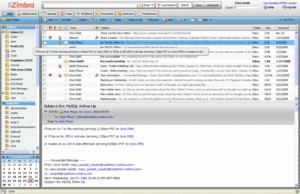
Zimbra – use at home as an alternative to Outlook or even as a corporate replacement for Microsoft Exchange Server. Mail-for-Exchange will connect on most phones to sync with the mail, calendar and contacts on your phone. Has instant chat as well as integrated Twitter and Facebook. Note if using the desktop client, go for the latest version 2.0 Beta client. Telkom SA also uses Zimbra for its web based mail solution for clients.
Citadel – consider hosting your own alternative to Google at home on a Raspberry Pi. Citadel will act as a mail server but also does calendaring, tasks, todos, and chat rooms.
Kopano – a replacement for MS Exchange. ZKpoana’s open source groupware combines the usability of Outlook with the stability and flexibility of a Linux server. Not only is Outlook supported natively, but users can also use WebAccess, which has the same look and feel as Web 2.0 Outlook, all ActiveSync-compatible mobile devices and BlackBerry handhelds via the BlackBerry Enterprise Server. Kopano is a fork of Zarafa and replaces it now.
grommunio – the grommunio project functions well as a drop-in replacement for Exchange. The developers connect components to the platform the same way Microsoft does, and they support RPC (Remote Procedure Call) with the HTTP protocol. According to the developers, grommunio also includes numerous interfaces of common groupware such as IMAP, POP3, SMTP, EAS (Exchange ActiveSync), EWS (Exchange Web Services), CalDAV, and CardDAV. With such broad support, grommunio integrates smoothly into existing infrastructures.
Funambol – the leading mobile cloud sync solution . The software in this repository is the open source version which consists of a sync server, clients/apps/sdks for mobile devices and computers, and connector software to interface with other systems. The open source version syncs PIM data such as contacts (address books), calendars (agendas), tasks and notes.
Alfresco – Alfresco is the Open Source Alternative for Enterprise Content Management (ECM), providing Document Management, Collaboration, Records Management, Knowledge Management, Web Content Management and Imaging. The State IT Agency (SITA) has adopted this product as their ECM platform and is currently adapting it for use by the South African Government (unfortunately the project lost way with changes of management). Ephesoft is often used in conjunction for bulk scanning of paper based documents.
Magnolia – open source content management system which offers instant mobile websites and multi-channel publishing. It’s used by thousands of organizations, including the U.S. Navy and Texas State University.
Plone – a widely used content management system. It has a reputation for excellent security features and can be used to create mobile Websites. pimcore – offers Web content management, product information management, asset management and rapid application development. Increase engagement with customers and users. Deliver rich & compelling digital experiences. Push content to any channel, any device, at any time.
Owl Intranet Engine – lets you create a knowledge base or FAQ site.
Nuxeo – a comprehensive free software / open source Enterprise Content Management (ECM) platform. It has been designed to be robust, scalable and highly extensible, by using modern open source Java EE technologies. It currently covers the following functions of the ECM spectrum: Document management, Collaborative Work, Business process management (workflow), Compliance, Records management, Digital asset management (DAM).
Joget Workflow – a people-driven, form-based workflow management system. This stand-alone application can manage and automate processes that are unique to each organization, creating added value. The system serves as a platform for users to design, deploy and run different types of workflows for different types of organizational processes. Workflow designers can create dynamic workflows that can be updated anytime. Each activity can be mapped with a form to capture the user’s input, while serving as a plug-in for system integration.
Bonita BPM – improves business operations by connecting people, processes, and information systems into easily managed applications. With advanced BPMN 2.0 functionality, easy-to-implement connectors, and ultra-scalable Java engine. Bonita BPM makes the job of building process-driven business applications faster than ever!
Freeplane – an application for an organizational technique called mind mapping. Occupying the middle ground between an editor and a diagramming tool, Freeplane allows the user to add content quickly and produce structured content that can be manipulated as easily as a diagram. It is useful for knowledge management and project management.
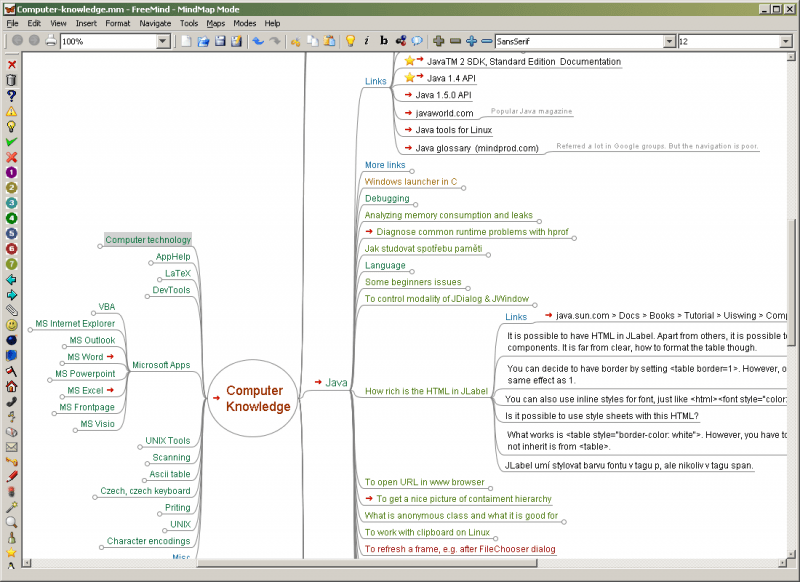
FreeMind – premier free mind-mapping software written in Java. As with other mind mapping software packages, FreeMind allows the user to edit a hierarchical set of ideas around a central concept. The non-linear approach assists in brainstorming new outlines and projects as ideas are added around the mind map. It runs on Microsoft Windows, Linux and Mac OS X.
LifeRay – Liferay Portal is an enterprise web platform for building business solutions that deliver immediate results and long-term value. Get the benefits of packaged applications and an enterprise application framework in a single solution. Liferay Social Office is a social collaboration solution for the enterprise. This full virtual workstation streamlines communication, saves you time, builds group cohesion, and raises productivity. The best part is that you won’t need any IT intervention–all you have to do is install and log in.
MindTouch – enables the creation of social help websites, and it’s used by customers like PayPal, Mozilla and Intuit.
BuddyPress – Social Networking, the WordPress way. Easily create a fully featured social network inside your WordPress.org powered site.
Elgg – A powerful open source social networking platform. Looks very much more like Facebook and has activity streams and group discussions. Cyn.in – combines wikis, social networks, blogs, file sharing repositories, micro blogs, discussion boards and other communication applications into a unified enterprise collaboration solution. See my video overview of Elgg here.
Group Office – an enterprise CRM and groupware tool. Share projects, calendars, files and e-mail online with co-workers and clients.
IGSuite – an innovative web-based groupware application suite providing some of today’s vital business applications such as customer relationship, resource and content management in an integrated solution with an easy to use, consistent look and feel across all applications in the suite.
InterTwinkles – a platform built from the ground up to help small democratic groups to do process online. It provides structure to improve the efficiency of specific communication tasks like brainstorming and proposals. It helps a group through decision-making processes.
CubeTree – free enterprise collaboration suite that integrates social networking features like profiles and microblogging with tools like wikis, blogs, etc.
Mail-in-a-Box lets you become your own mail service provider in a few easy steps. It’s sort of like making your own gmail, but one you control from top to bottom. Technically, Mail-in-a-Box turns a fresh cloud computer into a working mail server. But you don’t need to be a technology expert to set it up.
Mailcow – an excellent alternative to GMail if you want to setup and manage your own self-hosted mail server. It has a modern web interface.
DMS – production-ready fullstack but simple mail server (SMTP, IMAP, LDAP, Antispam, Antivirus, etc.) running inside a Docker container.
DimDim – an open source web meeting product with features like Application, Desktop and Presentation sharing with A/V streaming and chat. No attendee installation – all features are available through a web browser. Dimdim can be integrated with Moodle.
BigBlueButton – an actively supported open source video conferencing solution with no limits on webcams or participants. It integrates presentations, VoIP, and desktop sharing and will run on Windows, Mac or Linux.
OpenMeetings – free browser-based software that allows you to set up instantly a conference in the Web. You can use your microphone or webcam, share documents on a white board, share your screen or record meetings. It is available as hosted service or you download and install a package on your server with no limitations in usage or users.
SimpleWebRTC – video and audio conferencing tool using functionality built into modern browsers (no need to install extensions). A good example of a working implementation is Talky.io or Appear.in.
Jami – fully peer-to-peer instant messenger, audio/video conferencing, screensharing and secure file sharing. It is cross-platform on Linux, Windows, MacOS, iOS and Android. No personal information needed to create an account.
Keybase – secure end-to-end encrypted file sharing and messaging. Keybase’s benefit is being able to validate who the othe rperson is via ownership of a web domain, Twitter account, and other public identities.
Jitsi – try their free stand-alone service at https://meet.jit.si/ for video, voice, text, screen sharing, video streaming with a group of colleagues.
Loomio – tired of infinite email chains and lengthy meetings that never seem to reach a group decision or result? Sounds like you need Loomio: a collaboration platform radically transforming how groups make decisions, discuss ideas and collaborate online. Say goodbye to tedious meetings and inbox-clogging emails and try Loomio’s decision-making tools for free!
Cal.com – open-source alternative to Calendy for scheduling meetings, and it can be self-hosted. Users share their calendars’ avauilable times, and Cal.com suggests the best times that suite everyone.
Dead Simple Whiteboard – simple whiteboard sharing with text and video chat.
If you are looking for customer (or internal) collaboration support forums also look at the section for ‘Customer Self-Help Forums‘.
Decentralised Social Networking
There may be some overlap with the Collaboration category above, but this one will focus more on decentralised and peer-to-peer social networking.
Centralised social networking is like Facebook and Twitter where you log into a single centrally hosted service.
Decentralised social networking is usually a login into any node server and where your posts or messages propagate across all nodes.
Peer-to-peer social networking is no login to any server, and where all posts and messages propagate from client to client. These networks are nearly impossible to block or censor and are characterised by more freedom, no advertising in feeds, and user control over what is seen.
Many people want to break away from Facebook and Twitter and some of the options below already have numerous users, such as Mastodon with over 2 million active users.
Element (Matrix protocol) – Communicate with your team and out of network colleagues more efficiently: use dedicated rooms which persist information from their creation and forever. Forget group emails: join or create rooms per topic, per team, per event… Decide the level of transparency you want to provide across the organisation or project. This is an open source alternative to using Slack. The French Government announced in April 2018 they will be using Matrix to replace WhatsApp and Telegram messengers.
Zulip – another excellent open source alternative to Slack, with threaded conversations and many app integrations. You can host it on premise, make use of the free community cloud version, or opt for enterprise supported versions.
Rocket.chat – another team chat collaborator with a modern interface also a direct competitor to Slack. Lots of integrations and can be self-hosted. It has a very easy Ubuntu Snap install.
Fosscord – a free and open source self-hostable and decentralised platform compatible with Discord. Fosscord is free, open source, extendible, self-hostable, decentralised, themeable, secure, encrypted, and compatible with Discord… It’s going to be better than Discord! Right now it is still a work in progress, so not everything is fully in place.
Mattermost – an open-source, self-hostable online chat service with file sharing, search, and integrations. It is designed as an internal chat for organisations and companies, and mostly markets itself as an open-source alternative to Slack.
Identi.ca – A social microblogging service similar to Twitter, built on open source tools and open standards (based on Status.net). Allows users to send text-based posts up to 140 characters.
Diaspora – The privacy aware, personally controlled, do-it-all distributed (decentralised nodes) open source social network. It is an alternative to Facebook. A profile can be created so long though at Diasp.org. It will interconnect with Hubzilla, Friendica, Mastodon and others. See my video overview of the Diaspora network here.
Friendica – another federated social network similar to Facebook. It’s claim to fame is very good integrations with Twitter, Mastodon, Diaspora, GNU Social, and many others. It also can mirror from G+ and Twitter.
Hubzilla – probably the closest alternative to Facebook that there is with photo albums, groups, and lots off add-ins. See my video overview of the Hubzilla network here.
Mastodon – a free, open-source social network, and it federates using the ActivityPub protocol across Fediverse social networks. A decentralized alternative to commercial platforms, it avoids the risks of a single company monopolizing your communication. Pick a server that you trust — whichever you choose, you can interact with everyone else. Anyone can run their own Mastodon instance and participate in the social network seamlessly. This site can help you pick an instance to call home. See my video overview of the Mastodon network here.
Misskey – very similar to Mastodon also with full integration into the Fediverse, but has file sharing space and more themes.
Aether – a fully peer-to-peer social network with forums (subs) like Reddit. It is characterised by having democracy and transparency over mods. You can follow and sub(scribe) to topics/channels but cannot follow or message profiles directly. A post only appears in a sinle channel/topic. Content is reased after 6 months or so. See my video overview of Aether here.
Scuttlebutt – a fully peer-to-peer social network with forums (subs) like Reddit. Unlike Aether you can follow profiles and message profiles directly with encrypted messaging. It’s markdown editing for posts is better developed than Aether in that you can insert previews of images. A post can be linked to multiple topics/channels. See my video overview of the Patchwork client for SSB here.
Lemmy is a link aggregator / Reddit clone. It is decentralised and uses ActivityPub but does not yet federate to the Fediverse.
Bluesky Social – a decentralised social network built on the AT protocol. Currently it still only has a single central server (May 2023 in invite only mode) but alternative open-source client apps are already starting to appear.
Postmill – a link aggregator (Reddit alternative) that you can install on your own server. Tired of letting companies mine your data and make profit from your posts? This is a ready-to-use solution to bootstrap your community, including all the features that you’ve come to expect. Raddle is an example of one implementation, which also caters for Tor connectivity.
Retroshare – establish encrypted peer-to-peer connections between you and your friends to create a network of computers, and provides various distributed services on top of it: forums, channels, chat, file sharing, mail, voic/video. Retroshare is fully decentralized, and designed to provide maximum security and anonymity to its users beyond direct friends. Retroshare is entirely free and open-source software. It is available on Android, Linux, MacOS and Windows. There are no hidden costs, no ads and no terms of service. Where othe roptions are open peer-to-peer, Retroshare is billed as friend-to-friend peering as it grows as you add people that yopu know. So it is ideal for family, friends, and organisations.
Jami – fully peer-to-peer instant messenger, audio/video conferencing, screensharing and secure file sharing. It is cross-platform on Linux, Windows, MacOS, iOS and Android. No personal information needed to create an account.
Second Life (viewer, not backend hosting service) – yes it can be seen as a “game” by some, but you are interacting in a virtual 3D world with other real people and there is also the opportunity for online meetings complete with presentations, education, entertainment, etc. There are clients for Windows, macOS, as well as Linux, and also an open source client called Snowglobe. See educational and non-profit case studies, and e-Government.
Open Wonderland – similar to Second Life, but this platform is specifically focussed on online business collaboration. It is a 100% Java, free and open-source toolkit for building 3D interactive virtual worlds, and you can host the server yourself. It is an early access release still.
OpenSimulator – an open source multi-platform, multi-user 3D application server. It can be used to create a virtual environment (or world) which can be accessed through a variety of clients, on multiple protocols. OpenSimulator can be used to simulate virtual environments similar to Second Life.
Outworldz DreamGrid – a free, pre-packaged Windows-compatible virtual reality Opensimulator system that is easy to install, easy to run, and powerful. It it free and is open source. Anyone can run their own grid from home or at work. DreamGrid automatically configures routers for the Hypergrid with Plug and Play. It is preconfigured for the Hypergrid, and has the “Diva” version of OpenSim Diva’s WiFi admin interface running in Grid mode. It takes just one click to launch and enjoy the seamless border crossings and Second Life compatibility.
Security
(See also some secure messaging apps under Instant Messengers – Telephony section)
KeePass – free/open-source password manager or safe, which helps you to manage your passwords in a secure way. Has more import / export options than Password Corral.
BitWarden – open source password manager that syncs across all devices and can be self-hosted on premise. Your data is sealed with end-to-end AES-256 bit encryption, salted hashing, and PBKDF2 SHA-256. Very easy to setup and sync. The Premium hosted version also includes 2FA.
VaultWarden – alternative implementation of the Bitwarden server API written in Rust and compatible with upstream Bitwarden clients, perfect for self-hosted deployment where running the official resource-heavy service might not be ideal.
2FAS – open-source (including server with Docker image) 2FA app for Android and iOS. No account registration required. It has a desktop browser extension that gets an OK from the linked mobile app.
Kali Linux – an advanced Penetration Testing and Security Auditing Linux distribution with over 300 penetration testing tools.
GnuPG the GNU project‘s complete and free implementation of the OpenPGP standard as defined by RFC4880. GnuPG allows to encrypt and sign your data and communication, features a versatile key management system as well as access modules for all kinds of public key directories. Supports many different encryption schemes such as AES, 3DES, etc.
Mailvelope – the browser extension Mailvelope provides end-to-end encryption for your existing email address (Gmail, Yahoo, Outlook Live, Zoho and many more). Encrypt your mails without having to change your email provider! Encryption and decryption takes place exclusively on the end devices. This means that your private data will never leave your device unencrypted. It uses the OpenPGP standard. Mailvelope is having GMail authentication issues still so FlowCrypt is working better inc on Android – https://flowcrypt.com.
Enigmail – a seamlessly integrated security add-on for Mozilla Thunderbird and Postbox. It allows you to use OpenPGP to encrypt and digitally sign your emails and to decrypt and verify messages you receive.
VeraCrypt – an open source security tool that allows you to encrypt all data on each of your hard disk partitions and an external storage device like a USB drive. VeraCrypt also lets you create a virtual drive on your PC, which can be considered a safe for all of your important documents. VeraCrypt uses Advanced Encryption Standard (AES), Blowfish, CAST5, Serpent, Triple DES and Twofish. An alternative is also
Rohos Mini Drive which does not need admin privileges to open the encrypted USB drive on other computers.
MyDLP – can block credit card numbers, social security numbers, or sensitive files from being transmitted through e-mail, printers, the Web or removable devices.
OpenDLP – a free and open source, agent- and agentless-based, centrally-managed, massively distributable data loss prevention tool released under the GPL. Given appropriate Windows, UNIX, MySQL, or MSSQL credentials, OpenDLP can simultaneously identify sensitive data at rest on hundreds or thousands of Microsoft Windows systems, UNIX systems, MySQL databases, or MSSQL databases from a centralized web application.
RogueScanner – Think your home or small office wireless network is safe? Do you have any idea whether any intruders are on it?
Wireshark – the world’s foremost network protocol analyzer. It lets you capture and interactively browse the traffic running on a computer network. It is the de facto (and often de jure) standard across many industries and educational institutions.
Deepfence ThreatMapper – an open source platform for scanning runtime environments. ThreatMapper is an open source platform for scanning runtime environments for software supply chain vulnerabilities and contextualizing threats to help organizations determine which to address and when. Taking threat feeds from more than 50 different sources, the comprehensive suite of ThreatMapper capabilities and features are available on GitHub.
CrowdSec – an open-source and lightweight software that allows you to detect peers with malevolent behaviours and block them from accessing your systems at various level (infrastructural, system, applicative). To achieve this, CrowdSec reads logs from different sources (files, streams …) to parse, normalize and enrich them before matching them to threats patterns called scenarios. There is a plugin bouncer for WordPress sites too.
Nmap (“Network Mapper”) – a free and open source utility for network exploration or security auditing.
Kismet – an 802.11 layer2 wireless network detector, sniffer, and intrusion detection system. Kismet will work with any wireless card which supports raw monitoring (rfmon) mode, and (with appropriate hardware) can sniff 802.11b, 802.11a, 802.11g, and 802.11n traffic. Kismet also supports plugins which allow sniffing other media such as DECT. Kismet identifies networks by passively collecting packets and detecting standard named networks, detecting (and given time, decloaking) hidden networks, and infering the presence of nonbeaconing networks via data traffic. Google uses Kismet for sniffing WiFi points for Streetview.
Snort – Snort is an open source network intrusion prevention and detection system (IDS/IPS). Combining the benefits of signature, protocol and anomaly-based inspection, Snort is the most widely deployed IDS/IPS technology worldwide. With millions of downloads and approximately 300,000 registered users, Snort has become the de facto standard for IPS.
Zeek – is not an active security device, like a firewall or intrusion prevention system. Rather, Zeek sits on a “sensor,” a hardware, software, virtual, or cloud platform that quietly and unobtrusively observes network traffic. Zeek interprets what it sees and creates compact, high-fidelity transaction logs, file content, and fully customized output, suitable for manual review on disk or in a more analyst-friendly tool like a security and information event management (SIEM) system.
OSSIM (Open Source Security Information Management) – its goal is to provide a comprehensive compilation of tools which, when working together, grant network/security administrators with a detailed view over each and every aspect of his or her networks, hosts, physical access devices, server, etc. Besides getting the most out of well known open source tools, OSSIM provides a strong correlation engine, detailed low, medium and high level visualization interfaces, and reporting and incident management tools, based on a set of defined assets such as hosts, networks, groups and services.
PopFile Anti-Spam – Free anti-spam software. I have not used it but it is rated as effective and learns from how you use it.
ZManda – open source solution protects more than half a million of servers and desktops running various versions of Linux, UNIX, BSD, Mac OS-X and Microsoft Windows operating systems worldwide. Not only do they backup information, they’re into recovery as well. Alternative to iBackup.
Metasploit – provides useful information and tools for penetration testers, security researchers, and IDS signature developers. This project was created to provide information on exploit techniques and to create a functional knowledge base for exploit developers and security professionals. The tools and information on this site are provided for legal security research and testing purposes only.
OpenSignature – an open source project for the digital signature of documents. It works with all cards supported by OpenSC and focuses on adding support for cards from accredited Italian CAs. The goal of the project is to provide a first single product capable of supporting cards from multiple vendors/countries. This contrasts the approach taken by card vendors/providers whose software follows an exclusive single-vendor approach. OpenSignature thus attempts to make a major contribution to interoperability in the digital signature domain and aims to greatly facilitate the setup of public access points that are currently the objective of several projects in Italy.
Prey – keep track of your phone or laptop at all times, and will help you find it if it ever gets lost or stolen. It’s lightweight, open source software, and free for anyone to use. And it just works.
SNARE (System iNtrusion Analysis and Reporting Environment) – a series of log-collection agents to help you analyze audit log data. Agents are available for Linux, Windows, Solaris, IIS, Lotus Notes, Irix, AIX, ISA/IIS and more.
Eraser – a secure data removal tool for Windows. It removes sensitive data from your hard drive by overwriting it several times with carefully selected patterns and it also erases residue from deleted files including MFT-resident files (for NTFS volumes) and directory indices (for FAT). Also allows you to schedule your data removal in advance.
Advanced Onion Router – a Windows client intended as an alternative for the Tor+Vidalia+Privoxy bundle. It is able to force a program and its plugins to use the Tor proxy regardless of its configured proxy. Tor is a project for maintaining anonymity on the Internet.
Orbot – Tor proxy for Android phones.
YubiRADIUS – enterprise class software for secure remote access with YubiKey two-factor authentication. The solution is based on FreeRADIUS and open source components, offered as a free Virtual Appliance and has successfully replaced legacy authentication solutions for hundreds of organizations around the globe.
ZoneMinder – the top Linux video camera security and surveillance solution. ZoneMinder is intended for use in single or multi-camera video security applications, including commercial or home CCTV, theft prevention and child, family member or home monitoring and other domestic care scenarios such as nanny cam installations. It supports capture, analysis, recording, and monitoring of video data coming from one or more video or network cameras attached to a Linux system. ZoneMinder also support web and semi-automatic control of Pan/Tilt/Zoom cameras using a variety of protocols. It is suitable for use as a DIY home video security system and for commercial or professional video security and surveillance. It can also be integrated into a home automation system via X.10 or other protocols. If you’re looking for a low cost CCTV system or a more flexible alternative to cheap DVR systems then why not give ZoneMinder a try?
MotionEyeOS – a Linux distribution that turns your single-board computer into a dedicated video surveillance system. The OS is based on BuildRoot and uses motion as a backend and motionEye for the frontend. It runs on Raspberry Pi, Banana Pi, Odroid C1 and Cubietruck.
ODESSA – an acronym for “Open Digital Evidence Search and Seizure Architecture”. The intent of this project is to provide a completely open and extensible suite of tools for performing digital evidence analysis as well as a means of generating a usable report detailing the analysis and any findings.
The Sleuth Kit – open source digital investigation tools (a.k.a. digital forensic tools) that run on Windows, Linux, OS X, and other Unix systems. They can be used to analyze disk images and perform in-depth analysis of file systems (such as NTFS, FAT, HFS+, Ext3, and UFS) and several volume system types. Examiners and analysts can use the Autopsy graphical interface or The Sleuth Kit (TSK) command line tools to conduct an investigation.
Cryptomator – a simple tool for digital self-defense. It allows you to protect your cloud data (Dropbox, Google Drive, OneDrive, MEGA, pCloud, ownCloud, Nextcloud and any other cloud storage service which synchronizes with a local directory) by yourself and independently. Most cloud providers encrypt data only during transmission or they keep the keys for decryption for themselves. These keys can be stolen, copied, or misused. Thanks to Cryptomator, only you have the key to your data in your hand. No backdoors, no expiration date thanks to open source.
Utilities
7-Zip – free ZIP Archiver. Being used at South African Department of Water Affairs.
PeaZip – a free archiver, available as portable and installable software for Windows and Linux (x86 and x86-64). Create 7Z, ARC, BZ2, GZ, *PAQ, PEA, QUAD/BALZ, TAR, UPX, ZIP Extract ACE, ARJ, CAB, DMG, ISO, LHA, RAR, UDF and many more file formats.
fwbackups – a feature rich open source cross-platform backup manager.
FOG – a free open-source cloning/imaging suite that is intended to be a substitute for Ghost. It can be used to create images of Windows XP, Vista and 7 PCs using PXE and PartImage. Features include memory and disk test, disk wipe, antivirus scan and task scheduling.
Snappy Driver Installer Origin – a portable Windows tool to install and update device drivers. It can be used offline to install drivers where Internet isn’t available. The perfect technicians tool.
SystemRescueCD – a Linux system rescue disk available as a bootable CD-ROM or USB stick for administrating or repairing your system and data after a crash. It aims to provide an easy way to carry out admin tasks on your computer, such as creating and editing the partitions of the hard disk. It comes with a lot of Linux software such as system tools (parted, partimage, fstools, …) and basic tools (editors, midnight commander, network tools). It requires no installation (just boot from the CD). It can be used on Linux servers, Linux desktops or Microsoft Windows boxes. The kernel supports the important file systems (ext2/ext3/ext4, reiserfs, reiser4, btrfs, xfs, jfs, vfat, ntfs, iso9660), as well as network filesystems (samba and nfs). Tip: Actually you can also use any Ubuntu CD as well to boot a dead system in an emergency and get to the Internet to do secure banking, to check e-mail, or to use OpenOffice to type or print a document. An Ubuntu liveCD will only have basic repair utilities though. Some people also use an Ubuntu liveCD to clean boot their system for secure banking as the system is then malware and threat resistant.
Ventoy – an open source tool to create bootable USB drive for ISO/WIM/IMG/VHD(x)/EFI files. With Ventoy, you don’t need to format the disk over and over, you just need to copy the ISO/WIM/IMG/VHD(x)/EFI files to the USB drive and boot them directly. You can copy many files at a time and Ventoy will give you a boot menu to select them. x86 Legacy BIOS, IA32 UEFI, x86_64 UEFI, ARM64 UEFI and MIPS64EL UEFI are supported in the same way. Most type of OS supported (Windows/WinPE/Linux/ChromeOS/Unix/VMware/Xen…). It can optionally handle persistence too.
Clonezilla – a partition and disk imaging/cloning program similar to True Image or Norton Ghost.
Rescatux – a more user friendly but still very powerful system rescue distro for Linux and Windows.
Testdisk – a powerful free data recovery software! It was primarily designed to help recover lost partitions and/or make non-booting disks bootable again when these symptoms are caused by faulty software, certain types of viruses or human error (such as accidentally deleting a Partition Table). Partition table recovery using TestDisk is really easy. Runs on Windows (NT4, 2000, XP, 2003, Vista, 2008, Windows 7), Linux, FreeBSD, NetBSD, OpenBSD, SunOS and MacOS X.
PhotoRec – a file data recovery software designed to recover lost files including video, documents and archives from hard disks, CD-ROMs, and lost pictures (thus the Photo Recovery name) from digital camera memory. PhotoRec ignores the file system and goes after the underlying data, so it will still work even if your media’s file system has been severely damaged or reformatted.
dvddisaster – stores data on CD/DVD/BD in a way that it is fully recoverable even after some read errors have developed. This enables you to rescue the complete data to a new medium. CD, DVD and BD media keep their data only for a finite time (typically for many years). After that time, data loss develops slowly, with read errors growing from the outer media region towards the inside.
Unstoppable Copier – Recovers files from disks with physical damage. Allows you to copy files from disks with problems such as bad sectors, scratches or that just give errors when reading data. The program will attempt to recover every readable piece of a file and put the pieces together. Using this method most types of files can be made useable even if some parts of the file were not recoverable in the end.
Novell iFolder – an open source application, developed by Novell, intended to allow cross-platform file sharing across computer networks.
Virtualbox – a powerful x86 and AMD64/Intel64 open source virtualization product for enterprise as well as home use. Virtualbox will for example allow you to run a full installation of Ubuntu in a window on a Windows machine (or vice versa) or to run say Android OS on your Ubuntu machine. It is useful for testing out an operating system without affecting your currently installed OS. VirtualBox runs on Windows, Linux, Macintosh and OpenSolaris hosts and supports a large number of guest operating systems including but not limited to Windows (NT 4.0, 2000, XP, Server 2003, Vista, Windows 7), DOS/Windows 3.x, Linux (2.4 and 2.6), Solaris and OpenSolaris, and OpenBSD. A commercial equivalent would be VMware.
QEMU – a generic and open source machine emulator and virtualizer. Run KVM and Xen virtual machines with near native performance.
WineHQ – allows you to run MS Windows directly programs under Linux without an emulator or virtual machine. The Codeweaver Cross Referenced table of Linux software available that replaces various well known Windows software.
K3b – creates and burns CDs and DVDs, including ripping with DivX/XviD encoding, DVD copy, ISO burning, Video CD (VCD) creation, Audio CD creation for almost any audio file, CD-TEXT support for audio CDs, support for DVD-RW and DVD+RW and much more. Alternative to Nero Burning Rom.
Free Download Manager – a powerful, easy-to-use and absolutely free download accelerator and manager. It is open-source software distributed under GPL license and runs on Microsoft Windows systems. A major feature is its ability to resume broken downloads.
ChangeDetection.io – Self-hosted open source web page monitoring, notification and change detection. Can notify you of any chnages to a web page e.g. price specials.
FileZilla – client and server FTP functionality.
uGet – a free Windows and Linux download manager with resume functionality.
LocalSend – a free, open-source app that allows you to securely share files and messages with nearby devices over your local network, without needing an internet connection or third-party servers, making it a fast and reliable solution for local communication. Copies between Windows, macOS, Linux, Android, iOS and Fire OS devices.
Pen Drive Linux – boot into Linux from a USB flash drive.
Bleachbit – A system tool that allows you to preview and delete unnecessary files to free up your valuable disk space, maintain privacy, and remove hidden junk. It deletes cache, cookies, Internet history, logs, temporary files, broken shortcuts, and wipes clean 70 applications and more.
Greenshot for Windows – a screenshot tool, supports several image formats as well as saving part or all of a screen into a file within one second’s time.
ShareX for Windows – another excellent screenshot utility that has been around for over 10 years. Also has a scrolling capture option, OCR, and video capture (to GIF).
Shutter for Ubuntu / Linux – app that allows you to take screenshots, edit them, apply various effects, upload them online and more.
Flameshot – a free and open-source, cross-platform tool to take screenshots with many built-in features to save you time such as magnifiers, Imgur support, movable layers, etc. Works on Windows, macOS and Linux.
Pensela – The Swiss Army Knife of Screen Annotation Tools, intended to capture screens during a live broadcast and allow all sorts of advanced annotations on top.
Screenkey – A Linux screencast tool to display your keys for video screencasts, inspired by Screenflick.
Captura – excellent lightweight screen video recording tool for Windows, with quite few useful options.
WinMerge – a Windows tool for visual difference display and merging, for both files and directories. It supports Unicode and Windows Shell. It includes a flexible syntax coloring editor, Regexp filtering, side-by-side line differences and highlights differences.
WinDirStat – a disk usage statistics viewer and cleanup tool for Windows. It shows disk, file and directory sizes in a treelist and graphically in a treemap, much like KDirStat or SequoiaView.
UltraDefrag – a disk defragmenter for Windows that can even defrag locked system files by running during the boot process. It processes single files or folders from the Explorer context menu and is available for 32-bit and 64-bit Windows.
Create Synchronicity – a backup application that synchronizes files and folders. It can schedule backups, too. It’s multilingual and lightweight at only 180 KB.
Duplicati – a backup client that securely stores encrypted, incremental, compressed remote backups of local files on cloud storage services and remote file servers. Duplicati supports not only various online backup services like Windows Live SkyDrive, Amazon S3, Rackspace Cloud Files, Tahoe LAFS, Google Drive but also any servers that support SSH/SFTP, WebDAV, or FTP.
UrBackup – Open Source client/server backup system that makes file and image backups while the system is running without interrupting current processes (Windows/Linux/FreeBSD).
Rclone – a cross-platform open source application to backup and restore files to and from local and 40+ cloud storage platforms (AWS, Backblaze, Google Drive, Dropbox, Mega, NextCloud, ownCloud, Rackspace and many more). Its features include: mounting filesystems as a disk, is secure and safe, can sync files (or migrate) between different cloud providers, can avoid copying duplicate files, reduces bandwidth and time, can compress and split files (to overcome cloud provider limitations), verifies data integrity, and more. Kopia is built on top of it, and also offers file version management for proper backups.
Internxt – this online backup service uses open source clients (not the back-end service) but it is a zero-knowledge service, so your password encrypts/decrypts your data locally, and if lost, you lose access to your online data. Why the service is notable, though, is that it has a native Linux client.
Barrier – share one keyboard and mouse between multiple computers and operating systems. This is a fork of Synergy which went commercial.
TextSnatcher – an easy way to copy text from images on Linux. The tool performs optical character recognition (OCR) in seconds, allowing you to quickly copy text from anything visible on your screen to your system clipboard, ready to paste elsewhere.
MeshCentral – connect to your home or office devices from anywhere in the world using MeshCentral, the open source, remote monitoring and management server. Once installed, each enabled computer will show up in the “My Devices” section of the web site and will be able to perform remote desktop, remote terminal, file transfers and more. Get started by installing a MeshCentral server of your own or if you are not familiar with MeshCentral, you can try the public server at your own risk at MeshCentral.com.
Monitorix – a free, open source, lightweight system monitoring tool designed to monitor as many services and system resources as possible. It has been created to be used under production Linux/UNIX servers, but due to its simplicity and small size can be used on embedded devices as well. It consists mainly of two programs: a collector, called monitorix, which is a Perl daemon that is started automatically like any other system service, and a CGI script called monitorix.cgi. Monitorix includes its own HTTP server built in (which is listening by default on port 8080/TCP) to see the statistics graphs, so you aren’t forced to install a third-party web server to use it. Just point your browser at http://localhost:8080/monitorix.
OpenBoard is a replacement keyboard or Google’s Gboard or Microsoft’s SwiftKey. Other options also are AnySoftKeyboard and FlorisBoard.
Nala – a great replacement for APT on Debian systems. Faster, with better history management.
Virtual Network Computing (VNC) – a platform independent graphical desktop sharing system that uses the RFB protocol to remotely control another computer. It transmits the keyboard and mouse events from one computer to another, relaying the graphical screen updates back in the other direction, over a network.
Remotely – a remote control and remote scripting solution, built with .NET, Blazor, and SignalR Core.
RustDesk – a remote desktop software, the open source TeamViewer alternative, works out of the box, no configuration required. You have full control of your data, with no concerns about security. You can use our public rendezvous/relay server, or self-hosting, or write your own server.
Apache Guacamole – a clientless remote desktop gateway. It supports standard protocols like VNC, RDP, and SSH. No plugins or client software are required, just a web browser. Desktops accessed through Guacamole need not physically exist. With both Guacamole and a desktop operating system hosted in the cloud, you can combine the convenience of Guacamole with the resilience and flexibility of cloud computing. This remote gateway is handy to have a couple of different remote accesses setup, and you can access them from any browser through the gateway.
Speedtest Tracker – a self-hosted internet performance tracking application that runs speedtest checks against Ookla’s Speedtest service. The main use case for Speedtest Tracker is to build a history of your internet’s performance so that you can be informed when you’re not receiving your ISP’s advertised rates.
Education
Moodle – a Course Management System (CMS), also known as a Learning Management System (LMS) or a Virtual Learning Environment (VLE). It is a Free web application that educators can use to create effective online learning sites. Being used at Western Cape Provincial Government Education Department.
Integrated Learning, Information and Work Cooperation System (ILIAS) – a web-based learning management system that supports learning content management (including SCORM 2004 compliance) and tools for collaboration, communication, evaluation and assessment.
Chamilo – an open-source e-Learning and content management system, aimed at improving access to education and knowledge globally.E-learning being all about learning specific content, Chamilo tries to be as invisible as possible to learners and as useful as possible to teachers.
KA Lite – open-source software that can be downloaded and run on any computer, turning it into a webserver for viewing and interacting with downloaded Khan Academy videos and exercises, even when no internet is available. Students can connect to the server from within the classroom, on a laptop, tablet, or desktop computer.
eduCommons – a content management system designed specifically to support OpenCourseWare projects like Notre Dame OCW OCW Universidad Carlos III de Madrid, OCW Universidad de Cantabria. eduCommons will help you develop and manage an open access collection of course materials. It is built around a workflow process that guides content developers through the process of publishing materials in an openly accessible format.
ATutor – Open Source Web-based Learning Content Management System (LCMS) designed with accessibility and adaptability in mind. Administrators can install or update ATutor in minutes, develop custom templates to give ATutor a new look, and easily extend its functionality with feature modules. Educators can quickly assemble, package, and redistribute Web-based instructional content, easily retrieve and import prepackaged content, and conduct their courses online. Students learn in an adaptive learning environment.
Adapt Learning – server-based user interface for authoring eLearning courses using the Adapt Framework (both FOSS under GNU licensing.
QGIS used in Eastern Cape Province of South Africa for basic GIS training – more info here.
Curriki – an online community that gives teachers, students and parents universal access to over 30,000 free and open source SOURCE K-12 educational videos, audio’s, lessons, units, curricula collaboration tools and more. Yes, it is not open source software per se, but I do feel that reducing the cost of education through “open education” initiatives is very key to bridging the digital divide and levelling the playing fields between first and Third World countries, so I have included this link.
Sakai – designed by educators for educators, Sakai is an enterprise teaching, learning and academic collaboration platform that best meets the needs of today’s learners, instructors and researchers. Used in South Africa at University of Cape Town (UCT) as well as University of South Africa (UNISA) and North-West University. Internationally Oxford as well as Cambridge Universities in the UK, Stanford University in the USA and over 200 other international sites use this system.
CoFFEE – the new groupware application for digital discussions in a live classroom situation.
SchoolTool – a free administrative software for schools around the world. The goals of the project are to create a simple turnkey student information system, including demographics, gradebook, attendance, calendaring, room booking and reporting for primary and secondary schools, as well as a framework for building customized applications and configurations for individual schools or states.
Open Admin for Schools – a School Administration Program. It currently has the following features: Demographics, Attendance, Discipline, Report Card System, Online Gradebook, a Transcript System to print student transcripts, a Fees System (along with Lunch program), Parent/Student Viewing scripts, etc.
Àkura – a school management system that utilizes the latest technologies to facilitate a new school managerial experience for principals, teachers as well as parents.
Classis – a school information management system, which has been tailor-made to meet the needs of some of Europe’s largest international schools. It includes bespoke assessment and tracking frameworks as well as a comprehensive suite of home school communication and messaging tools to facilitate greater parental engagement.
Schoolbag – an electronic diary (e-diary), e-portfolio and digital workspace for students. Schoolbag allows students record their homework, store their notes, record their progress, complete and submit their homework to their teachers for correction. It allows school to truly leverage the benefits of mobile and tablet devices.
Open-School – an integrated school management system which focuses on excellence and evolution in the field of Education. To achieve this O-S is flexible and innovates the new trends in education management. Open-School is a diverse, demanding, and high quality educational management system where every user can discover and realize their potential to achieve overall development.
OpenSIS – open source Student Information System. Downloaded more than 50,000 times and used by more than 12,000 schools, openSIS bills itself as “the only open source Global SIS in the world.”
Epoptes – an open source computer lab management and monitoring tool. It allows for screen broadcasting and monitoring, remote command execution, message sending, imposing restrictions like screen locking or sound muting the clients and much more! It can be installed in Ubuntu, Debian and openSUSE based labs that may contain any combination of the following: LTSP servers, thin and fat clients, non LTSP servers, standalone workstations, NX or XDMCP clients etc.
iTALC – a use- and powerful didactical tool for teachers. It lets you view and control other computers in your network in several ways. It supports Linux and Windows XP, Vista and 7 and it even can be used transparently in mixed environments!
Mando – lets you create an interactive whiteboard. If you have your computer connected to a camera and a projector, you can use your laser pointer to control the computer in front of the class, just as you would use a mouse at your desk. Runs on Linux.
NoteLab – one of the decade-old oldest whiteboard applications. It is a free and open-source application with a vast set of features. This is a Java application and distributed as a .jar file. So you need the Java runtime for it to work.
OpenBoard – Interactive whiteboard for schools and universities. The Education Department (DIP) of the canton of Geneva, in Switzerland, maintains the tool along with the community on GitHub. It is also ideal for YouTubers wanting to illustrate things by drawing on the screen background etc.
Avogadro – an advanced molecule editor and visualizer designed for cross-platform use in computational chemistry, molecular modeling, bioinformatics, materials science, and related areas.
Jmol – an open-source Java viewer for chemical structures in 3D.
Kalzium – an application which will show you some information about the periodic system of the elements.
Step – an interactive physics simulator that allows students to explore classical mechanics, particles, springs, gravity, coulomb forces, collisions, sound waves, etc. It also includes an equation solver and a unit conversion tool.
Hot Potatoes – a suite which includes six applications, enabling you to create interactive multiple-choice, short-answer, jumbled-sentence, crossword, matching/ordering and gap-fill exercises for the World Wide Web. Hot Potatoes is freeware, and you may use it for any purpose or project you like. It is not open-source.
iTest – able to give each student a different version of a test because it can pull questions from a pre-established database. It’s available in nine different languages.
Safe Exam Browser – a webbrowser-environment to carry out online exams safely. The software changes any computer into a secure workstation. It regulates the access to any utilities like system functions, other websites and applications and prevents unauthorised resources being used during an exam.
TCExam – is computer-based assessment software aims to simplify the creation, delivery and scoring of tests. It is web-based, platform independent, language independent (includes translations in several languages and RTL support) and conforms to W3C Accessibility and Usability guidelines to provide equal opportunity to people with disabilities, including blind users.
Anki – a program which makes remembering things easy. Because it’s a lot more efficient than traditional study methods, you can either greatly decrease your time spent studying, or greatly increase the amount you learn. Anyone who needs to remember things in their daily life can benefit from Anki. Since it is content-agnostic and supports images, audio, videos and scientific markup (via LaTeX), the possibilities are endless.
FlashQard – educational software to improve your learning process. It is designed to help you learn not only a new language but anything that can be learnt! This aim is achieved by using the widely used method, called Leitner System, and the idea of “different card types for different purposes”.
jVLT – a vocabulary learning tool. Examples containing one or many of the vocabulary words may be specified. jVLT also can perform quizzes using a flash card system which is similar to the selective learning system proposed by German psychologist Sebastian Leitner. During a quiz, jVLT shows the examples of each word, letting you better memorize its usage.
Parley – In addition to traditional flashcards, Parley also utilizes anagrams, multiple choice, fill-in-the-blank, synonym/antonym and other types of tests to improve your vocabulary.
Marble – a virtual globe and world atlas — your Swiss army knife for maps. Find your way and explore the world!
Dr. Geo – to design & manipulate interactive geometric sketches with constraints. Design sketches on workstation and share everywhere with Tablets & PC!
GeoGebra – a dynamic mathematics software for all levels of education that brings together geometry, algebra, spreadsheets, graphing, statistics and calculus in one engine. In addition, GeoGebra offers an online platform with over 1 million free classroom resources created by their multilingual community.
GraphCalc – an all-in-one solution to everything from everyday arithmetic to statistical analysis, from betas to Booleans, from cubes to calculus, from decimals to derivatives. GraphCalc combines all the features of a professional mathematics package with the simplicity of an easy to learn windows interface.
Player Project – creates Free Software that enables research in robot and sensor systems. The Player robot server is probably the most widely used robot control interface in the world. Its simulation backends, Stage and Gazebo, are also very widely used.
TuxTyping – an educational typing tutor for kids starring Tux, the Linux penguin. This educational game comes with two different games for practicing your typing, and having a great time doing it.
See also 7 Fantastic Free Social Media Tools for Teachers
See UK Schools List of recommended alternative software.
SchoolForge – their mission is to unify independent organizations that advocate, use, and develop open resources for education.
Network / Performance / Asset Management
Zenoss – a free open source IT operations monitoring product that provides an unprecedented level of monitoring functionality and extensibility. One application providing full featured systems management capabilities for: Asset discovery and inventory, Availability & Performance Monitoring, Event & Fault Management, Alerting & Remediation, Reporting, and Change Detection. Paid enterprise support also available. Zenoss has been deployed in over 25,000 organizations in over 180 countries.
Nagios – a powerful monitoring system that enables organizations to identify and resolve IT infrastructure problems before they affect critical business processes. Capabilities to monitor applications, services, operating systems, network protocols, system metrics and infrastructure components with a single tool. Nagios is used by an estimated 250,000 users worldwide including Amazon.com, 3Com, AT&T, Google, IBM, Verisign, Symantec, etc. Another free (but not open source) option is also the free version of Scrutinizer.
M/Monit – can monitor and manage distributed computer systems, conduct automatic maintenance and repair and execute meaningful causal actions in error situations. If your web-site is down, getting an alert is all well and good, but it is much more useful if you can also have it automatically fixed, especially at 04 AM. M/Monit can do that. M/Monit can automatically start a process if it does not run, restart a process if it does not respond, and suspend a process if it uses too many resources.
Opsview – an open source network, server and application monitoring tool. It is released under the GNU General Public License (GPL) version 2. Opsview uses Nagios as its monitoring ‘engine’ and incorporates Nagvis, NagiosGraph,
MRTG, NMIS into a single tool. Opsview provides a web user interface that allows system administrators to access monitoring views and configure monitoring settings.
ntop – a network traffic probe that shows the network usage, similar to what the popular top Unix command does. ntop is based on libpcap and it has been written in a portable way in order to virtually run on every Unix platform and on Win32 as well. ntop users can use a a web browser (e.g. netscape) to navigate through ntop (that acts as a web server) traffic information and get a dump of the network status.
Pingnoo – an open source cross-platform graphical traceroute/ping analyser with jitter and latency graphs for each hop. The software generates attractive graphs showing the history of each hop. The attractive visuals makes it easy to follow network routes and finding the causes of downtimes and poor network performance. This is helped by the software’s tab support, which lets you analyse multiple routes simultaneously.
Nebula – an open source cross-platform scalable overlay networking tool with a focus on performance, simplicity and security. It is a mutually authenticated peer-to-peer software defined network based on the Noise Protocol Framework. Nebula uses elliptic curve Diffie-Hellman key exchange, and AES-256-GCM in its default configuration. Nebula was created to provide a mechanism for groups hosts to communicate securely, even across the internet, while enabling expressive firewall definitions similar in style to cloud security groups. It was developed by Slack and powers their networking worldwide.
OpenNMS – the world’s first enterprise grade network management platform developed under the open source model. The goal is for OpenNMS to be a truly distributed, scalable platform for all aspects of the FCAPS network management model, and to make this platform available to both open source and commercial applications.
Uptime Kuma – an open source and self-hosted alternative to Uptime Robot for monitoring website uptime, with numerous notification options.
HealthChecks – another self-hosted open source uptime monitor with alerts. It is a cron job monitoring service. It listens for HTTP requests and email messages (“pings”) from your cron jobs and scheduled tasks (“checks”). When a ping does not arrive on time, Healthchecks sends out alerts. The service is useful too if you do not have publicly accessible servers that can be pinged from outside. It is an alternative to Dead Man’s Switch.
Gatus – another self-hosted open sourve uptime monitor but with more custimisable alerts and also has uptime badges for websites.
Glances – a cross-platform system monitoring tool written in Python. It provides a text based dashboard of hardwrae performance, drive space, active Docker containers, etc. Being text based you can use it to check on remote devices, and it integrates well into Home Assistant too.
Squid – a proxy server and web cache daemon. It has a wide variety of uses, from speeding up a web server by caching repeated requests; to caching web, DNS and other computer network lookups for a group of people sharing network resources; to aiding security by filtering traffic. Although primarily used for HTTP and FTP, Squid includes limited support for several other protocols including TLS, SSL, Internet Gopher and HTTPS. Squid web site claims that if working in front of the server application, it can improve performance by up to four times. Squid is especially efficient in case of (probably unexpected) high traffic to one or several particular pages, as in this case near 100% of caching can be achieved. Used by YouTube and Microsoft Windows Update (for resuming partial downloads) and it is also the standard used on the South African government networks operated by SITA, where the SquidGuard plugin is used as a URL redirector to enable the use of blacklists.
Apache SpamAssassin – powerful spam filtering.
ASSP – self-proclaimed “absolute best SPAM fighting weapon that the world has ever known,” ASSP sits on your SMTP servers to stop spam and scan for viruses.
MailScanner – a free e-mail security package for mail servers. It incorporates SpamAssassin, ClamAV and a number of other tools to block spam and mailware.
Frox – a transparent ftp proxy which optionally supports caching (either through an external http cache (eg. squid), or by maintaining a cache locally), and/or running a virus scanner, on downloaded files.
Calamaris – parses the logfiles of a wide variety of Web proxy servers and generates reports about peak-usage, request-methods, status-report of incoming and outgoing requests, second and top-level destinations, content-types, and performance. Parses logfiles from Squid, NetCache, Inktomi Traffic Server, Oops! proxy server, Novell Internet Caching System, Compaq Tasksmart or Netscape/iplanet Web Proxy Server and generates a report.
OCS Inventory NG – powerful inventory and package deployment system for Microsoft Windows, Linux, BSD, Sun Solaris, IBM AIX, HP-UX, Mac OSX.
GLPI – IT and asset management software.
VyOS – (forked from Vyatta) provides a free routing platform that competes directly with other commercially available solutions from well known network providers. Because VyOS is run on standard amd64, i586 and ARM systems, it is able to be used as a router and firewall platform for cloud deployments.
PacketFence – Free and Open Source network access control (NAC) system. Boasting an impressive feature set including a captive-portal for registration and remediation, centralized wired and wireless management, 802.1X support, layer-2 isolation of problematic devices, integration with the Snort IDS and the Nessus vulnerability scanner; PacketFence can be used to effectively secure networks – from small to very large heterogeneous networks. In use at government as well as many educational institutions.
Ganymede – a portable and customizable network directory management system, released under the GNU General Public License. Ganymede is designed to manage network directory services such as NIS, DNS, Netinfo, and LDAP.
Chef – an open source systems integration framework built to bring the benefits of configuration management to your entire infrastructure. Chef works by allowing you to write recipes that describe how you want a part of your server (such as Apache, MySQL, or Hadoop) to be configured. These recipes describe a series of resources that should be in a particular state – for example, packages that should be installed, services that should be running, or files that should be written. Chef then makes sure that each resource is properly configured, only taking corrective action when it’s necessary. The result is a safe, flexible mechanism for making sure your servers are always running exactly how you want them to be.
Ansible – a powerful automation engine that makes systems and apps simple to deploy. Used by companies like Rackspace, Care.com and Evernote.
Likewise – Securely Integrate Linux, Unix and Mac with Microsoft Active Directory.
FreeNAS – enables users to build network-attached-storage (NAS) on nearly any hardware platform of their choosing. It turns standard hardware into a BSD-based storage appliance with features like replication, data protection, encryptions, file sharing, etc.
OpenMediaVault – the next generation network attached storage (NAS) solution based on Debian Linux. It contains services like SSH, (S)FTP, SMB/CIFS, DAAP media server, RSync, BitTorrent client and many more. Thanks to the modular design of the framework it can be enhanced via plugins including Docker.
Apache Directory Project – an open source LDAP directory server implemented in java. It provides an excellent back-end database for managing users, network resources and more. The architecture is made for plugable components – allow the Apache Directory Server to be used for and interface to almost any other system. Examples of these could be DHCP and DNS. All communication with the Apache Directory Server takes place via JNDI standard.
Plausible Analytics – is a transparent, open source alternative to Google Analytics. It is a leaner, more transparent option, with the essential data you need but without all the privacy baggage.
Matomo – Google Analytics alternative that protects your data and your customers’ privacy. Take back control with Matomo – a powerful web analytics platform that gives you 100% data ownership.
Nginx Proxy Manager – easiest way to manage reverse proxy and Let’s Encrypt SSL key management for Raspberry Pis and other services running in your home. See my video.
Freenet Project – an Internet within the Internet for file sharing, browsing, and publish “freesites” (web sites accessible only through Freenet) and chat on forums, without fear of censorship. It operates in a secure manner to allow anonymous web browsing via other peers. Works on Windows, MacOS and Linux.
ZeroTier – an encrypted virtual network backbone, allowing multiple machines to communicate as if they were on a single network. The code is all open source, and you can self-host the controller or use the ZeroTierOne service with either free or paid plans. Their free plan (cloud based) is robust, solid, and very consistent.After you have two nodes connected, connecting to each other — no matter where you are or what side of any firewalls you may be on — is exactly what you would expect if you were in the same building on the same network.
Zabbix – an open-source monitoring software tool for IT infrastructure such as networks, servers, virtual machines, and cloud services. Zabbix collects and displays basic metrics such as CPU load, memory usage, disk space usage, network traffic, and application availability. Zabbix also supports more advanced metrics such as custom metrics, thresholds, and triggers.
Netdata – collects metrics per second and presents them in beautiful low-latency dashboards. It is designed to run on all of your physical and virtual servers, cloud deployments, Kubernetes clusters, and edge/IoT devices, to monitor your systems, containers and applications. It scales nicely from just a single server to thousands of servers, even in complex multi/mixed/hybrid cloud environments, and given enough disk space it can keep your metrics for years.
OpenSnitch – a comprehensive open source firewall maanger for Linux desktops.
Portmaster – a free and open-source application firewall, for Linux and Windows desktops, that does the heavy lifting for you. Restore privacy and take back control over all your computer’s network activity.
Private Cloud Computing
Eucalyptus – delivers private cloud software that enables enterprises and government agencies to establish their own cloud computing environments, using the hardware and software infrastructure that is in place without modification.
OpenNebula – an open-source toolkit to easily build any type of cloud: private, public and hybrid. OpenNebula has been designed to be integrated with any networking and storage solution, and so to fit into any existing data centre. In use by CERN, Ruhr and others.
AbiCloud – open source infrastructure software for the creation and integral management of public & private clouds over heterogeneous environments. It offers scaling, managing, automatically and immediately provisioning servers, storage, networks or applications. Not only are all major hypervisors fully and simultaneously supported, Abiquo allows conversion of virtual machines from one hypervisor to another in any combination, completely eliminating vendor lock-in with a single drag and drop operation.
OpenStack – is a global collaboration of developers and cloud computing technologists producing the ubiquitous open source cloud computing platform for public and private clouds. The project aims to deliver solutions for all types of clouds by being simple to implement, massively scalable, and feature rich. The technology consists of a series of interrelated projects delivering various components for a cloud infrastructure solution.
ownCloud – gives you universal access to your files through a web interface or WebDAV. It also provides a platform to easily view & sync your contacts, calendars and bookmarks across all your devices and enables basic editing right on the web. Installation has minimal server requirements, doesn’t need special permissions and is quick. ownCloud is extendable via a simple but powerful API for applications and plugins.
NextCloud is a fork of ownCloud and is probably more actively maintained now with additional tweaks. See my video overview of NextCloud here.
Peergos – a peer-to-peer (IPFS protocol) encrypted global filesystem with fine-grained access control designed to be resistant to surveillance of data content or friendship graphs. It will have a secure messenger, with optional interoperability with email, and a totally private and secure social network, where users are in control of who sees what (executed cryptographically). You also get the ability to socialize with your friends in the platform using the newsfeed.
Syncthing – a continuous file synchronization program. It synchronizes files between two or more computers in real time, safely protected from prying eyes. Your data is your data alone and you deserve to choose where it is stored, whether it is shared with some third party, and how it’s transmitted over the internet. None of your data is ever stored anywhere else other than on your computers. There is no central server that might be compromised, legally or illegally.
Retroshare – establish encrypted connections between you and your friends to create a network of computers, and provides various distributed services on top of it: forums, channels, chat, mail… Retroshare is fully decentralized (no central server), and designed to provide maximum security and anonymity to its users beyond direct friends. Retroshare is entirely free and open-source software. It is available on Android, Linux, MacOS and Windows. There are no hidden costs, no ads and no terms of service.
Pydio – a mature open source software solution for file sharing and synchronization. With intuitive user interfaces (web / mobile / desktop), Pydio provides enterprise-grade features to gain back control and privacy of your data: user directory connectors, legacy filesystems drivers, comprehensive admin interface, and much more.
AppScale – an open source version of the Google App Engine.
Cloud Foundry – an open-source Platform as a service (PaaS) sponsored and lead by Pivotal with contributions from a large ecosystem of organizations and individual developers. Cloud Foundry provides users with a choice of clouds, developer frameworks, and application services, while increasing a user’s ability to built, test, and scale applications.
Apache CloudStack – open source software designed to deploy and manage large networks of virtual machines, as a highly available, highly scalable Infrastructure as a Service (IaaS) cloud computing platform. CloudStack is used by a number of service providers to offer public cloud services, and by many companies to provide an on-premises (private) cloud offering, or as part of a hybrid cloud solution.
eyeOS – invented the web desktop 6 years ago and it is today the leading Cloud Desktop worldwide. Headquartered in Barcelona, eyeOS is one of the biggest Open Source projects in Europe with more than 1 million downloads and communities across the globe. IBM has selected eyeOS as its preferred Open Source Cloud platform in 2010 and signed a global partnership. Gartner named eyeOS Cool Vendor in IT Operations management in 2011.
OpenShift – is Red Hat’s Platform-as-a-Service (PaaS) that allows developers to quickly develop, host, and scale applications in a cloud environment. With OpenShift you have choice of offerings, including online, on premise, and open source project options.
Kubernetes – also known as K8s, is an open-source system for automating deployment, scaling, and management of containerised applications. It groups containers that make up an application into logical units for easy management and discovery.
Scalr Cloud Management Platform – a web-based control panel for cloud infrastructure that serves as an interface between end users and the multiple cloud platforms that they use.
Buildah – an open source tool for building your own container from scratch.
Instant Messengers / Telephony
Pidgin (was called GAIM) – A multi-protocol instant messaging (IM) client that runs on Windows and Linux. Connects to most of the IM’s from this single program. Supports AIM, Bonjour, Gadu-Gadu, Google Talk, Groupwise, ICQ, IRC, MSN, MySpaceIM, QQ, SILC, SIMPLE, Sametime, XMPP, Yahoo!, Zephyr and even MXit.
| |
Gwibber – open source microblogging client for Linux. It brings the most popular social networking web services to your desktop and gives you the ability to control how you communicate. You can reply and interact with Twitter, Identi.ca, StatusNet, Facebook, FriendFeed, BrightKite, Digg, Flickr, and Qaiku. | |
Identi.ca – Identi.ca is a micro-blogging service. You can use it to write short notices about yourself, where you are, and what you’re doing, and those notices will be sent to all your friends and fans. The software also implements the OpenMicroBlogging protocol, meaning that you can have friends on other microblogging services that can receive your notices. You can take your data and the source code and set up your own server. | |
Asterisk – a software implementation of a telephone private branch exchange (PBX) originally created in 1999 by Mark Spencer of Digium. Like any PBX, it allows attached telephones to make calls to one another, and to connect to other telephone services including the public switched telephone network (PSTN) and Voice over Internet Protocol (VoIP) services. | |
Ekiga – (formerly known as GnomeMeeting) is an open source SoftPhone, Video Conferencing and Instant Messenger application over the Internet. It supports HD sound quality and video up to DVD size and quality. It is interoperable with many other standard compliant software, hardware and service providers as it uses both the major telephony standards (SIP and H.323). | |
Jitsi – open source multi-platform voice and video chat with SIP support and desktop sharing. It also has a public cloud that anyone can use for free for video meetings. | |
Tox – with the rise of government monitoring programs, Tox provides an easy-to-use application that allows you to connect with friends and family without anyone else listening in. Essentially a replacement for Skype. For Windows, Mac, Linux, and mobile. | |
Mumble – low latency secure audio chat during gaming or for secure office communications. For Windows, Mac, Linux, iOS and Android. Mumble is very popular with gamers playing remotely over the internet to chat real-time. | |
Briar – a secure open source alternative to WhatsApp. Briar is a messaging app designed for activists, journalists, and anyone else who needs a safe, easy and robust way to communicate. Unlike traditional messaging tools such as email, Twitter or Telegram, Briar doesn’t rely on a central server – messages are synchronized directly between the users’ devices. Android only, unfortunately. | |
Choqok – microblogging client for KDE (but will install on GNOME and Ubuntu) which allows multiple accounts to connect to Twitter, GNU Social, Mastodon, and Pump.io. | |
Jami – fully peer-to-peer instant messenger, audio/video conferencing, screen sharing and secure file sharing. It is cross-platform on Linux, Windows, MacOS, iOS and Android. No personal information needed to create an account. | |
Delta Chat – an open source native secure messaging app that uses your existing e-mail account as a communications medium via encrypted e-mails. Everyone is potentially a user, with no central account required. | |
 | SimpleX - the first E2EE messenger without user IDs (also no e-mail nor mobile phone registration required). No access to contacts is needed, but to add somneone you both need to exchnage a one-time unique code. |
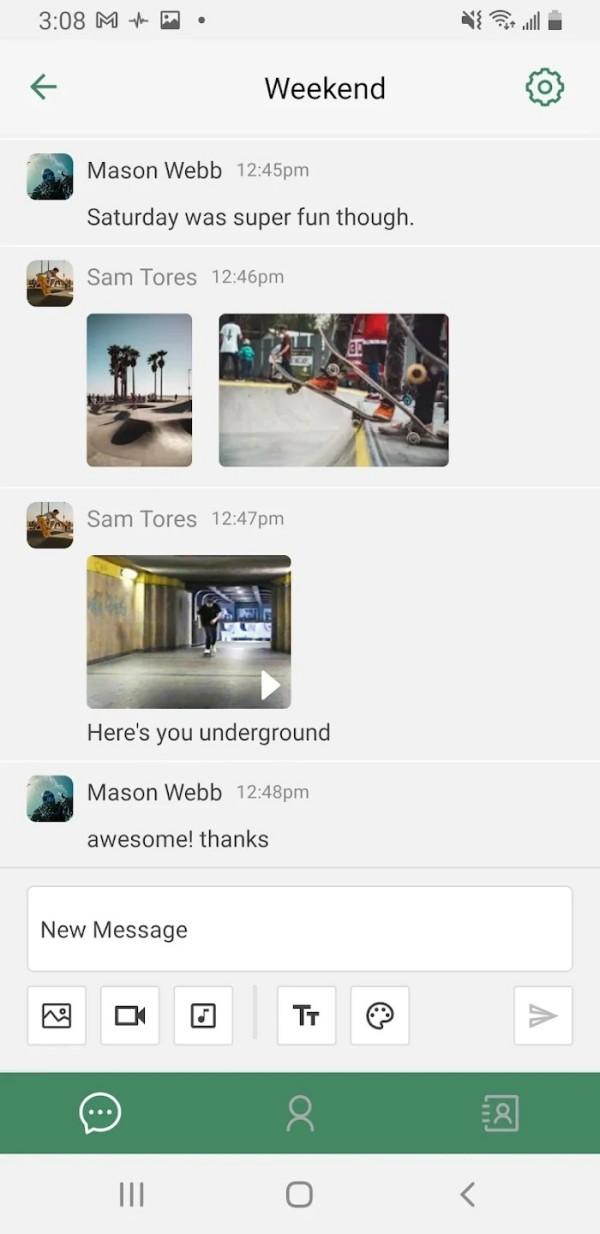 | Databag is a self-hosted messaging service with E2EE. It is decentralised and also federates. Clients are available for Android and iOS in the app stores. |
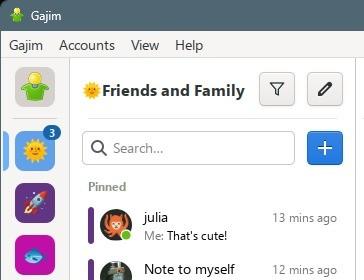 | Gajim - a fully-featured cross-platform XMPP client. I use Gajim and Miv.im myself, but there are also numerous other client apps for XMPP. |
Project Management
GanttPV – freeware project scheduling software to replace MS Project. Runs on Windows and Mac OS.

OpenProj – free, open source project management solution. OpenProj is a replacement of Microsoft Project and other commercial project solutions. OpenProj is ideal for desktop project management and is available on Linux, Unix, Mac or Windows. It even opens existing Microsoft or Primavera files. OpenProj shares the industry’s most advanced scheduling engine with Project-ON-Demand and provides Gantt Charts, Network Diagrams (PERT Charts), WBS and RBS charts, Earned Value costing and more.
GanttProject – an open-source project management application for Windows, macOS and Linux desktops. It is written in Java and Kotlin and includes contributions from hundreds of people all around the world.
OpenProject – the free version offers project planning and scheduling, product roadmap and release planning, task management and team collaboration, Agile and Scrum, time tracking, cost reporting and budgeting, and bug tracking. More or less this is enough for most small to large projects, but if you want more advanced features, such as custom themes and logos, Single Sign On, or dedicated support, you can consider the Enterprise or Cloud versions.
ProjectLibre – the open source replacement of Microsoft Project! ProjectLibre is compatible with Microsoft Project 2003, 2007 and 2010 files. You can simply open them on Linux, Mac OS or Windows. InfoWorld just awarded ProjectLibre “Best of Open Source Software” and Opensource.com named ProjectLibre to the list of “Top 10 open source projects for 2013”.
TaskJuggler – a modern and powerful, Free and Open Source Software project management tool. Its new approach to project planning and tracking is more flexible and superior to the commonly used Gantt chart editing tools. It covers the complete spectrum of project management tasks from the first idea to the completion of the project. It assists you during project scoping, resource assignment, cost and revenue planning, risk and communication management.
Project.net – first open source solution to be included in Gartner’s “Magic Quadrant for IT Project and Portfolio Management Applications,” Project.Net is a robust, but affordable alternative to commercial PPM software. It integrates with many BI systems, includes advanced social networking features and commercial support and services are available.
LibrePlan – a web based application, making project management available to not just the project manager, but the entire project team, and if necessary across organisations.
]project-open[ – is said to be used by over 6,000 companies worldwide. A full installation is based on over 100 open source packages including a Linux distro, Postgre SQL, TCL as it’s main language, Perl for system integration, and many more. It supports integration with 30+ packages such as OpenLDAP, OpenOffice, ProjectLibre, and others. ]po[ is an enterprise project management tool with many features, including support for Agile.
Open Workbench – is an open source desktop application that provides robust project scheduling and management functionality. Already the scheduling standard for more than 100,000 project managers worldwide, Open Workbench is a free and powerful alternative to Microsoft Project.
KPlato – a project management application. It is intended for managing moderately large projects with multiple resources. KPlato is now unmaintained since 2012. Users are recommended to switch to the Calligra Plan fork.
Redmine – more than just multi-project management. It offers more of a collaboration portal as well with project wiki’s and forums, subprojects, issue tracking, time tracking, document sharing, repository browser, diff (blame) viewer, Atom feeds to keep stakeholders updated, etc.
MyCollab – a suite of three collaboration modules for small and midsize businesses: project management, customer relationship management (CRM), and document creation and editing software. The community edition doesn’t have a cloud option and is slower, due to not using query cache, but provides essential project management features, including tasks, issues management, activity stream, roadmap view, and a Kanban board for agile teams. While it doesn’t have a separate mobile app, it works on mobile devices as well as Windows, MacOS, Linux, and Unix computers.
OrangeScrum – supports agile methodologies, specifically with a Scrum task board and Kanban-style workflow view. It’s geared for smaller organizations—freelancers, agencies, and small and midsize businesses. The open source version offers many of the features in OrangeScrum’s paid editions, including a mobile app, resource utilization, and progress tracking. Other features, including Gantt charts, time logs, invoicing, and client management, are available as paid add-ons, and the paid editions include a cloud option, which the community version does not.
Taiga – an open source project management platform that focuses on Scrum and agile development, with features including a Kanban board, tasks, sprints, issues, a backlog, and epics. Other features include ticket management, multi-project support, wiki pages, and third-party integrations. It also offers a free mobile app for iOS, Android, and Windows devices, and provides import tools that make it easy to migrate from other popular project management applications.
Tuleap – an application lifecycle management (ALM) platform that aims to manage projects for every type of team—small, midsize, large, waterfall, agile, or hybrid—but its support for agile teams is prominent. Notably, it offers support for Scrum, Kanban, sprints, tasks, reports, continuous integration, backlogs, and more. Other features include issue tracking, document tracking, collaboration tools, and integration with Git, SVN, and Jenkins, all of which make it an appealing choice for open source software development projects.
Focalboard – a self-hosted project management tool that helps define, organize, track and manage work across individuals and teams. The software is available in two editions: Personal Desktop, a desktop app for todos and personal projects. The other edition is Mattermost Boards which is a self-hosted or cloud server for team planning and collaboration.
NavalPlan – soon to change to LibrePlan – a web based project planning tool for users based on some concepts: company and multi-project overview, criteria assignments, tasks tagging, resources management, resource allocation (specific and generic), company load control, external integration, etc.
Collabtive – web-based project management software.
web2Project – a Free Open Source business-oriented Project Management System (PMS) built for the future.
Todoyu – a web based collaborative project management system.
Kanboard – project management software that uses the Kanban methodology. Kanboard is not for everybody, it’s made for people who want to manage their projects efficiently and simply. It can also be used just as Trello replacement task / todo manager. See my video overview of Kanboard here.
Restya – probably more powerful and feature rich than Trello. It will import boards from Trello to help with migration.
Wekan – another mature Trello-like kanban board. See my video overview of Wekan here. For some reason this video has garnered well over 10,000 views.
TaskBoard – a reasonably full-featured solution with filtering, comments, attachments, and most of the standard features of a kanban board, with inline support for MarkDown.
Achievo – a flexible web-based resource management tool for business environments. Achievo’s resource management capabilities will enable organisations to support their business processes in a simple, but effective manner.
dotProject – a web-based project management application, designed to provide project layout and control functions.
Xprocess – for project management and process improvement, focuses particularly on agile and priority-driven approaches. The preconfigured processes, eg. Scrum, FDD, Prince2, Unified, can be tailored. Gantt/Burndowns/target status are continually updated.
eHour – open source webbased time tracking tool for companies and organizations who need accurate information on how much time is spend on projects.
Kimai – tracks work time and prints out a summary of your activities on demand. Yearly, monthly, daily, by customer, by project … It’s simplicity is its strength. Due to Kimai’s browser based interface it runs cross-platform, even on your mobile device.
Rachota – a portable application for timetracking different projects. It runs everywhere. It displays time data in diagram form, creates customized reports and invoices or analyses measured data and suggests hints to improve user’s time usage.
Clockify – an open-source timesheet app and time tracker. Timer mode: track timing using a stopwatch, Manual mode: enter hours manually, Projects: track time on various projects, Billing: mark time as billable, Tasks: set a list of predefined tasks. Works everywhere and syncs (Web, Chrome, Firefox, Windows, Mac, Linux, iOS, Android, Integrations).
Charm – a program for OS X, Linux and Windows that’s built around two major ideas: tasks and events. Tasks are things time spent on repeatedly. For example, writing a research paper is a task. Written research paper for three hours on Wednesday is an event. When you do the same events multiple times over, they get accumulated and later can be printed in activity reports or weekly timesheets.
Hamster – time tracking for individuals, who’d like to keep track of the time they spent on particular activities during the day.
Traggo – a tag-based time tracking tool. In Traggo there are no tasks, only tagged time spans. With tags, Traggo tries to be as customizable as possible, f.ex. if you work on different projects you could add a project-tag. If you like to see statistics from the different things you do, you could add a type-tag with values like email, programming, meeting. You can do it just as you like.
Kapow – a punch clock program to help you keep track of hours spent on activities throughout the day. All you have to do is to clock in and out your time by clicking on Start/Stop buttons. In case of any mistake, you can simply edit the entries by clicking on Edit. Reports, invoices, billing time are all available. Kapow app has a very simple and minimalist design.
Framadate – produced by the French not-for-profit association Framasof. Offered as a hosted web application, Framadate is ad-free, supports real time collaboration, is multilingual, and can help with planning and documenting meetings. It is intended for helping find suitable meeting or event times across participants. It can also be downloaded and self-hosted.
Dudle – an open source poll and event scheduling application. It was released with a GPL v.3 license. You can easily create scheduling and polling events in over twenty different languages, either anonymously or with a distinct URI. Dudle comes with different stylesheets to give your event scheduling or polling a distinct appearance. The source code is available, and you can run the software on your own server.
Croodle – a self-hosted and end-to-end encrypted web application to schedule a date or to do a poll on a any topic.. It’s released under an MIT license and is written in PHP. Croodle is encrypted end-to-end. All data (poll title, description, options, user names, and so on) are encrypted and decrypted in the browser using 256-bit AES encryption. If you’re building a site and you want to include polling as a service, this is a great project to try.
Rallly – provides a simple and direct interface for quickly scheduling events and allowing participants to vote on the date and time of events. Released with an MIT license, Rallly’s source code is available for you to contribute to or review. Its primary means of delivery is as a container, so there’s essentially no configuration required to quickly launch an instance on your own server using Podman, Kubernetes, or Docker.
GIS / Navigation
OpenStreetMap – is a project aimed squarely at creating and providing free geographic data such as street maps to anyone who wants them. The project was started because most maps you think of as free actually have legal or technical restrictions on their use, holding back people from using them in creative, productive or unexpected ways. Many mobile phone apps now also make use of free OpenStreetMap mapping.
Ushahidi Platform – allows anyone to gather distributed data via SMS, email or web and visualize it on a map or timeline. Their goal is to create the simplest way of aggregating information from the public for use in crisis response. An example of use in South Africa was to map xenophobic attacks perpetrated against non-South Africans. Other uses are for mapping election monitoring, swine flu outbreaks, the Haiti post-earthquake crisis response, crime maps, etc. A free hosting platform can be found at Crowdmap.
Mapnik – a Free Toolkit for developing mapping applications. It’s written in C++ and there are Python bindings to facilitate fast-paced agile development. It can comfortably be used for both desktop and web development. It runs on Windows, Mac and Linux.
GeoKettle – a spatially-enabled version of Kettle. It is a powerful, meta-data driven spatial ETL tool dedicated to the integration of different spatial data sources for building and updating geospatial data warehouses. GeoKettle enables the transparent handling of the geometry data type as any other classical data type to all transformations available in Kettle. It is possible to access geometry objects in JavaScript and to define custom transformation steps. Topological predicates have all been implemented.
Geomatica FreeView – a flexible data viewing tool supporting over 100 raster and vector formats for loading, viewing, selection, and enhancement. FreeView is useful for any geospatial data viewing application, and is freely distributable. FreeView includes a modern interface with many useful display tools, including fast roam and zoom, image enhancements, numeric values display, and attribute table display.
Quantum GIS (QGIS) – a user friendly Open Source Geographic Information System (GIS) licensed under the GNU General Public License. QGIS is an official project of the Open Source Geospatial Foundation (OSGeo). It runs on Linux, Unix, Mac OSX, and Windows and supports numerous vector, raster, and database formats and functionalities. Quantum GIS provides a continously growing number of capabilities provided by core functions and plugins. You can visualize, manage, edit, analyse data, and compose printable maps.
inaSAFE – this app helps scientists and communities explore the potential impact of natural disasters in a region. To use it, you’ll need Quantum GI.
RapidFTR – RapidFTR is specifically designed to streamline and speed up Family Tracing and Reunification (FTR) efforts both in the immediate aftermath of a crisis and during ongoing recovery efforts. RapidFTR is a versatile open-source mobile phone application and data storage system that seeks to expedite this process by helping humanitarian workers collect, sort and share information about unaccompanied and separated children in emergency situations so they can be registered for care services and reunited with their families.
GRASS – is free Geographic Information System (GIS) software used for geospatial data management and analysis, image processing, graphics/maps production, spatial modelling, and visualization. GRASS is currently used in academic and commercial settings around the world, as well as by many governmental agencies and environmental consulting companies. GRASS is an official project of the Open Source Geospatial Foundation. OSGeo – The Open Source Geospatial Foundation, or OSGeo, is a not-for-profit organization whose mission is to support and promote the collaborative development of open geospatial technologies and data. See also the FreeGIS.org.
OpenLayers – makes it easy to put a dynamic map in any web page. It can display map tiles and markers loaded from any source. OpenLayers has been developed to further the use of geographic information of all kinds.
World Wind – provides a rich set of features for displaying and interacting with geographic data and representing a wide range of geometric objects.
ZombieTrackerGPS – a Linux alternative to Garmin’s BaseCamp software.
List of Open Source GIS projects at https://www.gislounge.com/open-source-gis-applications/.
Graphics / Video / Photo Editing
GimpShop – GIMPshop is a modification of the free/open source GNU Image Manipulation Program (GIMP), intended to replicate the feel of Adobe Photoshop. Its primary purpose is to make users of Photoshop feel comfortable using GIMP. See also Wikipedia for more info. See online tutorials for GIMP.
GIMP – is a free software raster graphics editor. It is primarily employed as an image retouching and editing tool. In addition to free-form drawing, GIMP can accomplish essential image work-flow steps such as resizing, editing, and cropping photos, combining multiple images, and converting between different image formats. GIMP can also be used to create basic animated images in the GIF format. It runs on GNU/Linux (i386, PPC), Microsoft Windows (XP, Vista), Mac OS X, Sun OpenSolaris, and FreeBSD.
DraftSight – a professional-grade, open 2D CAD product for users who want a better way to create, edit and view DWG files. DraftSight is easy to use and is available for professional CAD users, students and educators to download and activate for free. Based on advanced architecture, DraftSight has a small footprint, should take less than a few minutes to download, and runs on multiple operating systems, including Windows XP®, Windows Vista and Windows 7.
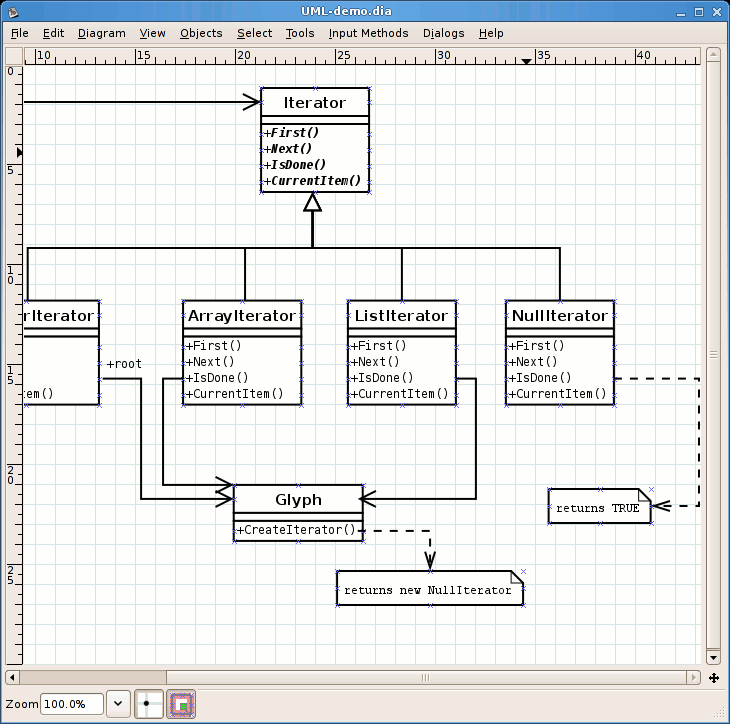
Dia is roughly inspired by the commercial Microsoft Windows program ‘Visio’, though more geared towards informal diagrams for casual use. It can be used to draw many different kinds of diagrams. It currently has special objects to help draw entity relationship diagrams, UML diagrams, flowcharts, network diagrams, and many other diagrams.
yEd Graph Editor – a powerful desktop application that can be used to quickly and effectively generate high-quality diagrams. Create diagrams manually, or import your external data for analysis. A replacement for Microsoft Visio.
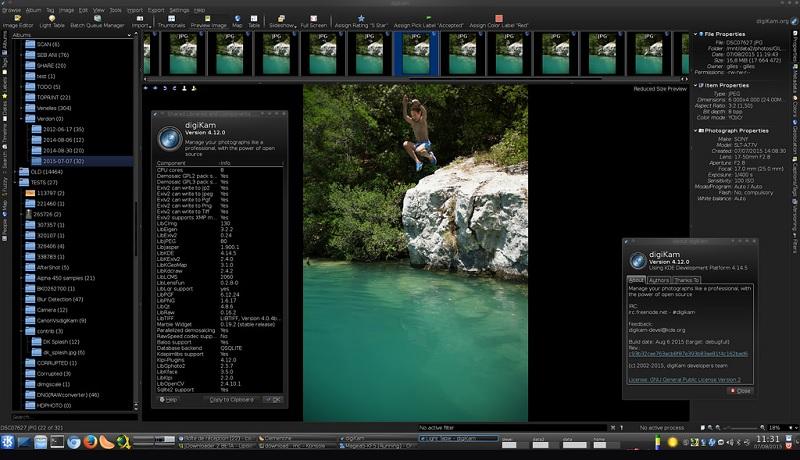
Digikam – an advanced digital photo management application for Linux, Windows, and Mac-OSX. It does so many things like tagging, advanced editing, geotagging, uploading to Flickr, Facebook, etc.
RawTherapee – free RAW converter and digital photo processing software. Windows and Linux.
RawStudio – an open-source program to read and manipulate RAW images from digital cameras. Rawstudio will convert your RAW files into JPEG, PNG or TIF images which you can then print or send to friends and clients. You can also upload photos directly to Picasa, Flickr and Facebook galleries.
Darktable – a virtual lighttable and darkroom for photographers: it manages your digital negatives in a database and lets you view them through a zoomable lighttable. it also enables you to develop raw images and enhance them. Runs on Linux and Mac.
Fotoxx – a free open source Linux program for photo editing and collection management. Navigate a large image collection with a thumbnail browser, click on images to view or edit. Import camera RAW files and edit with 16-bit color. Save edited images as TIFF-8/16, PNG or JPEG with adjustable compression. Edit the whole image or a selected area, with smooth edge-blending. Edit functions have live feedback using the full window. Add tags, dates, star-ratings, comments and captions to images and search using these criteria plus image file names. Fotoxx uses your image files wherever they are. All user-supplied image data (tags, comments, ratings) is saved inside the image files in a standards-compliant manner (EXIF, IPTC), and can be shared with other photo programs.
Avidemux – provides Windows, Mac, and Linux users with an easy-to-use open source tool for DVD/DivX converting and editing. Avidemux also has scripting support for automation and even offers DVD authoring with the addition of the open source software, dvdauthor. Alternative to Adobe Premiere.

Inkscape – Open Source vector graphics editor, with capabilities similar to Illustrator, Freehand, CorelDraw, or Xara X using the W3C standard Scalable Vector Graphics (SVG) file format. See Wikipedia article on Inkscape. Alternative to Adobe Illustrator.
Pinta – Pinta is a drawing/editing program modeled after Paint.NET. It’s goal is to provide a simplified alternative to GIMP for casual users. Can run on Windows, Mac and Linux.
Karbon – is an open-source vector creating application for designing logos, clipart, and illustrations. It offers several features such as configurable plugins, gradient and pattern tools, a beautiful customizable user interface, and support for ODG, WMF, PDF, and SVG, among others. Karbon is among the collection of free software in KDE’s Calligra Suite.
MyPaint – a fast and easy open-source graphics application for digital painters. It lets you focus on the art instead of the program. You work on your canvas with minimum distractions, bringing up the interface only when you need it. Can run on Windows, Mac and Linux.
Pencil2D Animation – an easy, intuitive tool to make 2D hand-drawn animations. It is cross-platform and can seamlessly switch between raster and vector workflows, allowing you to sketch, ink & paint on the go.
OpenToonz – based on the software “Toonz”, developed by Digital Video S.p.A. in Italy, OpenToonz has been customized by Studio Ghibli, and used for the creation of its works for many years. Dwango has launched the OpenToonz project in cooperation with Digital Video and Studio Ghibli.
Sozi – a free, open-source tool for creating interactive and animated presentations using .SVG/Vector artwork.
Krita – a Linux (and cross-platform) reative sketching and painting application based on KOffice technology. Whether you want to create art paintings, cartoons, concept art, animation or textures, Krita supports most graphics tablets out of the box.
Enve 2D Animation – you can use enve to create vector animations, raster animations, and even use sound and video files. Enve was created with flexibility and expandability in mind.
Synfig Studio – create your own animations with this open source motion graphics tool. As the animator, you only have to account for an element at the start and at the end of its movement. Synfig calculates everything else.
Scribus – an Open Source program that brings award-winning professional page layout and desktop publishing to Linux/UNIX (inc AppImage), Mac OS X (inc Apple Silicon), OS/2 Warp 4/eComStation, FeeBSD, and Windows desktops with a combination of “press-ready” output and new approaches to page layout. Underneath the modern and user friendly interface, Scribus supports professional publishing features, such as CMYK color, separations, Spot Colors, ICC color management and versatile PDF creation. Scribus has many unexpected touches, such as powerful vector drawing tools, support for a huge number of file types via import/export filters, emulation of color blindness or the rendering of markup languages like LaTeX or Lilypond inside Scribus. The Scribus file format is XML-based and open. Unlike proprietary binary file formats, even damaged documents can be recovered with a simple text editor – sometimes a challenging problem with other page layout programs.
Miro – will play every video format you’ve ever heard of, and many you’ve never heard of as well. That may be the least of its features, though. Where this player really shines is in its capability to find and play videos. You’ll be able to subscribe to video RSS feeds, podcasts, and video blogs, download and save videos from YouTube, find TV shows, and play high definition, full screen videos. You can even download BitTorrent files from directly within it. Alternative to Windows Media Player.
MediaCoder – free universal batch media transcoder that will convert media files between formats, shrink files with little quality loss, extract audio from video files, or manage multimedia.
Super – a free tool to convert (encode) or play any Multimedia file.
Handbrake – HandBrake is an open-source, GPL-licensed, multiplatform, multithreaded video transcoder, available for MacOS X, Linux and Windows.
Broadcaster StudioPRO – capture any video file on your hard drive or any live streaming video playing in an Internet browser or media player / viewer. StudioPro then let’s you record and save from those sources in a variety of file formats and compression qualities.
Qprompt – a free and open source teleprompter video creators. Runs on Linux, Windows, macOS, and Android right now.
ScreenStudio – let’s you record or stream your Ubuntu/Linux, OS X and Windows 10 desktop in full HD video. ScreenStudio will let you record your desktop in a full HD video files. Overlay some text or even your webcam. It will also let you stream your desktop to services like UStream, Hitbox or Twitch.tv. It now also lets you remote control it via your phone.
Blender – a 3D animation suite that provides one tool that provides full multiresolution sculpting capabilities with 2D bitmap/3D procedural brushes (Paint, Smooth, Pinch, Inflate, Grab) supporting symmetry. And, that’s just the beginning of Blender’s capabilities. This open source software is free to download and use. Alternative to TruSpace.
Meshlab – the open source system for processing and editing 3D triangular (and LiDAR) meshes for Windows, macOS and Linux. It provides a set of tools for editing, cleaning, healing, inspecting, rendering, texturing and converting meshes. It offers features for processing raw data produced by 3D digitization tools/devices and for preparing models for 3D printing.
Shotcut – a free, open source, cross-platform video editor for Windows, macOS and Linux. Major features include support for a wide range of formats; no import required meaning native timeline editing; Blackmagic Design support for input and preview monitoring; and resolution support to 4k.
Piwigo – is open-source photo management software. Manage, organize and share your photo easily on the web. Designed for organisations, teams and individuals. It has numerous 3-party plugins that extend its capabilities.
Immich – open-source self-hosted alternative to Google Photos. It has very similar features to Google Photos, apart from not having any photo editing capability.
Picsur – easily self-host images as an alternative to Imgur. It will provide links to difefrent formats of teh image, to embed an image in a blog, etc. It feels like a hybrid between Imgur and Pastebin.
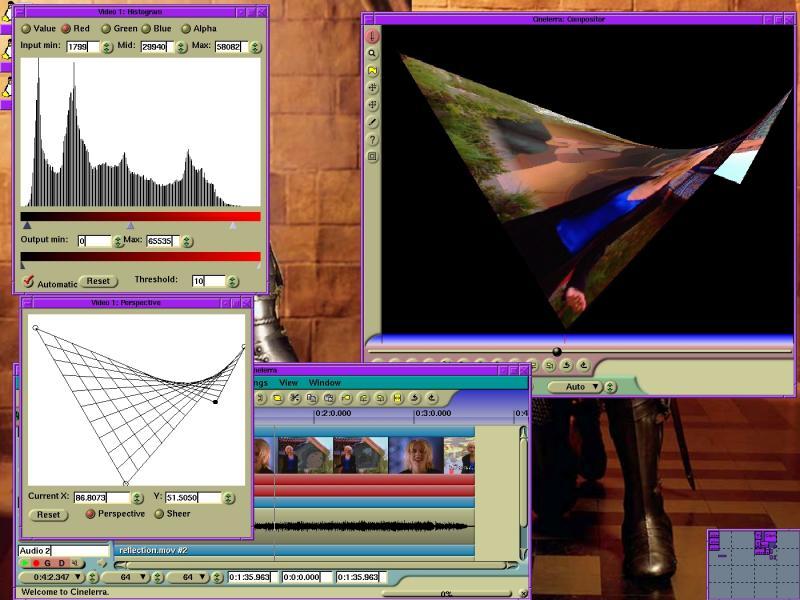
Cinelerra – does primarily 3 things: capturing, compositing, and editing audio and video with sample level accuracy. It’s a movie studio in a box.
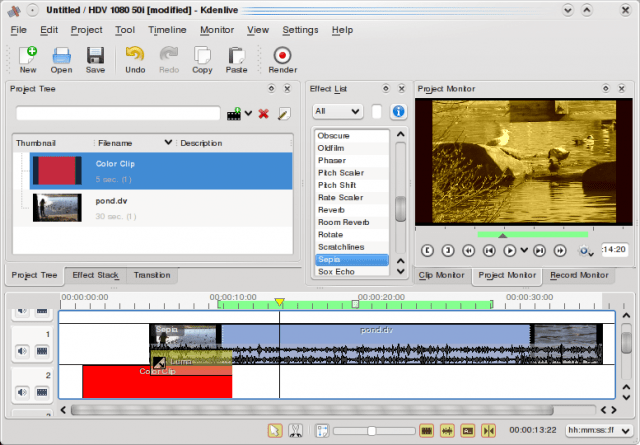
Kdenlive – an intuitive and powerful multi-track video editor, including most recent video technologies. Kdenlive supports all of the formats supported by FFmpeg (such as QuickTime, AVI, WMV, MPEG, and Flash Video), and also supports 4:3 and 16:9 aspect ratios for both PAL, NTSC and various HD standards, including HDV.

LiVES – mixes real-time video performance and non-linear editing in one professional quality application. It will let you start editing and making video right away, without having to worry about formats, frame sizes, or frame rates.

OpenShot – An open source, non-linear video editor for GNOME, built with Python, GTK, and the MLT Framework. Screenshots, documentation, and tutorial videos.
Sound / Audio
Audacity – free, open source software for recording and editing sounds. It is available for Mac OS X, Microsoft Windows, GNU/Linux, and other operating systems.
VLC Media Player – The cross-platform open-source multimedia framework, player and server… it plays everything.
Hushboard – mutes your microphone while typing. Works on key presses. No settings, just works.
NoiseTorch – an easy-to-use open source application for Linux with PulseAudio. It creates a virtual microphone that suppresses noise, in any application. Use whichever conferencing or VoIP application you like and simply select the NoiseTorch Virtual Microphone as input to torch the sound of your mechanical keyboard, computer fans, trains and the likes.
Cadmus – a graphical application which allows you to remove background noise from audio in real-time in any communication app. Cadmus adds a notification icon to your shell which allows you to easily select a microphone as a source, and subsequently creates a PulseAudio output which removes all recorded background noise (typing, ambient noise, etc).
SonoBus – an easy-to-use application for streaming high-quality, low-latency peer-to-peer audio between devices over the internet or a local network. Great for band practices over the Internet. It is cross-platform so any device could be Windows, Linux, MacoS, Android or iOS.
Muse – a MIDI/Audio sequencer with recording and editing capabilities written originally by Werner Schweer now developed and maintained by the MusE development team. MusE aims to be a complete multitrack virtual studio for Linux.
Ardour – Ardour is a professional digital workstation (DAW) for working with audio and MIDI, and runs on Windows, macOS and Linux. Ardour’s core user group: people who want to record, edit, mix and master audio and MIDI projects. When you need complete control over your tools, when the limitations of other designs get in the way, when you plan to spend hours or days working on a session, Ardour is there to make things work the way you want them to.
Rosegarden – a well-rounded audio and MIDI sequencer, score editor, and general-purpose music composition and editing environment. Rosegarden is an easy-to-learn, attractive application that runs on Linux, ideal for composers, musicians, music students, and small studio or home recording environments.
Mixxx – free, open source DJ software that gives you everything you need to perform live mixes.
MusikCube – freeware MP3 player with support for removable storage devices.
Songbird – an open source player and a platform committed to “playing the music you want + from the sites you want + on the devices you want.” Songbird thereby challenges the conventions of discovery, purchase, consumption and organization of music on the Internet. Alternative to iTunes.
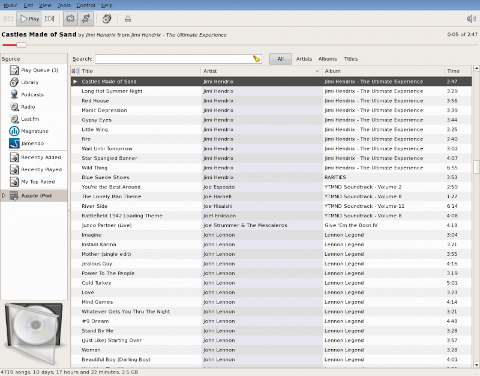
Rhythmbox – an integrated music management application, originally inspired by Apple’s iTunes. It is free software, designed to work well under the GNOME Desktop, and based on the powerful GStreamer media framework. The latest version recognises iPhones as well.
Clementine – a multi-platform music player. It is inspired by Amarok 1.4, focusing on a fast and easy-to-use interface for searching and playing your music. It can subscribe to podcasts and it also links to Spotify, LastFM, Grooveshark, Soundcloud and other online services. Runs on Linux, Windows and Mac.
Floola – a freeware application to efficiently manage your iPod or your Motorola mobile phone (any model supporting iTunes except iPhone and iPod touch). It’s a standalone application that can be run directly from your iPod and needs no installation under Linux (any GTK2 distro), Mac OS X (10.3.9 or newer!) and Windows (98 or newer, including Vista). It allows adding YouTube and Myspace videos with a single click. Now it even makes it possible to keep your Google calendars synched!
Amarok – open source music player for Linux, Windows and Mac OS X.
Rockbox – an open source firmware for mp3 players, written from scratch. It runs on a wide range of players including iPods.
MusicBrainz Picard – the next generation MusicBrainz tagging application. This new tagging concept is album oriented, as opposed to track/file oriented like the ClassicTagger was. Picard is written in Python, which is a cross-platform language, and makes use of cross-platform libraries – this allows the same code to run both on Windows, Linux and Mac OS X.
Navidrome – an open source web-based music collection server and streamer. It gives you freedom to listen to your music collection from any browser or mobile device. It’s like your personal Spotify!
Sound Juicer – Sound Juicer is a clean, mean, and lean CD ripper for GNOME 2. If your computer is connected to the Internet, it will automatically attempt to retrieve track information from the freely-available MusicBrainz service.
TuxGuitar – lets you create and playback tab scores. Features include multi-track display, auto-scroll, effects and import/export to popular audio file formats.
GNU Solfege – ear training app has exercises designed to teach students to identify intervals, chords, scales and rhythmic patterns. It also includes some theory and sight singing activities.
Impro-Visor (short for “Improvisation Advisor”) – a music notation program designed to help jazz musicians compose and hear solos similar to ones that might be improvised. The objective is to improve understanding of solo construction and tune chord changes.
Phonascus – a totally free program for studying music theory that allows you to focus on specific skills and exercises, on both theory and aural training.
ScoreDate – helps musicians to learn music reading. It is suitable for any skill, from beginners to professional users. From slow training to first sight reading.
Kodi (formerly XBMC) – an award-winning free and open source (GPL) software media player and entertainment hub that can be installed on Linux, OSX, Windows, iOS, and Android, featuring a 10-foot user interface for use with televisions and remote controls. It allows users to play and view most videos, music, podcasts, and other digital media files from local and network storage media and the internet. It evens runs on a Raspberry Pi!
eSpeak – a compact open source software speech synthesizer for English and other languages, for Linux and Windows.
Simon – is an open-source speech recognition program and replaces the mouse and keyboard. It is designed to be very flexible and allows customization for any application where speech recognition is needed.
Mycroft – A secure and private open source alternative to Alexa. Mycroft brings more privacy, security, and freedom into your voice assistant applications.
AzuraCast – a free and open-source self-hosted web radio (Internet radio) management suite. Upload media, manage playlists, create local mount points and remote relays, view analytics and reports and much more, all from the convenience of your web browser.
Finance / Business
HomeBank – free software. Use it to manage your personal accounts. It is designed to easy to use. Analyse your finances in detail using powerful filtering tools and graphs. Runs on Windows, Mac, Linux and even Nokia Tablet. Great if you plan to later move to Linux or Mac and you can continue using the same application without being locked in.
KMyMoney – personal finance manager (like Quicken) for Windows, Linux, OS X.
GnuCash – Personal and small-business financial-accounting software, freely licensed under the GNU GPL and available for GNU/Linux, Mac OS X and Windows.
TurboCash – features stock control, general ledger, accounts receivable and payable, reporting and analysis capabilities.
Akaunting – From invoicing to expense tracking to accounting, Akaunting has all the tools you need to manage your money online, for free.
Money Manager EX – a free, open-source, cross-platform, easy-to-use personal finance software. It primarily helps organize one’s finances and keeps track of where, when and how the money goes. It is also a great tool to get a bird’s eye view of your financial worth. Money Manager includes all the basic features that 90% of users would want to see in a personal finance application. The design goals are to concentrate on simplicity and user-friendliness – something one can use every day.
JStock – makes it easy to track your stock investment. It provides well organized stock market information, to help you decide your best investment strategy.
iTrade – provide a charting and trading system for your stocks.
jBilling – claims to be “world’s leading open source enterprise billing solution.” It’s particularly good for subscription-based billing, and notable customers include Deutsche Telecom, Constant Contact and Rackspace.
Simple Invoices – a free, open source, web based invoicing system.
Crater – Embedded Invoicing & Bill Pay for platforms. Add payments, invoicing workflows, and working capital tools for users.
Artful.ly – For mid-sized arts organizations, entrepreneurial go-getters, data geeks, and web software nerds. Manages ticket sales through cash or credit cards, manage donations, online RSVPs for free events, etc.
Mobilizon – a free and open source online tool, that can federate, to help manage your events and communities as an alternative to Facebook Events or Meetup. Mobilizon is a federated software: hosts can install it on a server to create instances that act as Mobilizon websites. Mobilizon instances can be federated together, so a profile registered on instance A may contribute to a group created on instance B.
listmonk – a standalone, self-hosted, newsletter and mailing list manager. It is fast, feature-rich, and packed into a single binary. It uses a PostgreSQL database as its data store. See an installation guide here.
Mifos – aims to help microfinance institutions do a better job of providing loans to poor people around the world.
Octopus – next generation microfinance MIS.
WatchOCR – OCR server for PDFs. Based on Knoppix, WatchOCR uses cuneiform, and exact image to create text searchable PDFs from image only PDFs. Using the web interface, WatchOCR can be remotely configured to monitor a watched folder for newly scanned PDFs for OCR conversion. Leveraging the power of a liveCD distro, WatchOCR is the fastest way to get an OCR service up and running for your network.
Odoo (formerly OpenERP) – claimed to be a complete and the most feature rich ERP and CRM system, as well as the most popular open source one. Among the features are management accounting, financial accounting, inventory management, sales and purchase management, tasks automation, Human Resource Management, marketing campaigns, help desk, and point of sale.
Openbravo – ERP for retailers, distribution, manufacturing, etc. With 3 m+ downloads and 1,000s of organizations using Openbravo solutions every day, Openbravo is a world leader in the Open Source enterprise software space.
Opentaps – ERP solution used by Toyota, Honeywell, and other well known companies.
OrangeHR – a flexible and easy to use solution for small and medium-sized companies free of charge. By providing modules for personnel information management, employee self-service, leave, time & attendance, benefits and recruitment companies are able to manage the crucial organization asset – people. The combination of these modules into one application assures the perfect platform for re-engineering and aligning your HR processes along with the organizational goals.
WaypointHR – an HR database for managing employee records and personnel information.
Jaspersoft Business Intelligence (BI) – over 10 million downloads already of this popular BI tool with 11,000 commercial customers worldwide. Gartner’s Magic Quadrant for Business Intelligence Platforms 2010 predicts that growth of open source BI platforms will grow faster than adoption of commercial platforms.
Pentaho – offers a comprehensive open-source BI platform available on-premises, in the cloud or via SaaS. Also, a recommended BI tool in the Gartner report. Both Pentaho and Jaspersoft “scored higher in the customer support question than any of the mega vendors” according to Gartner!
SpagoBI – the only entirely Open Source Business Intelligence suite. It covers all the analytical areas of Business Intelligence projects, with innovative themes and engines.
Orange – Open source data visualization and analysis for novice and experts. Data mining through visual programming or Python scripting. Components for machine learning. Add-ons for bioinformatics and text mining. Packed with features for data analytics.
RapidMiner (formerly known as YALE) – a flexible Java environment for knowledge discovery in databases, machine learning, and data mining. It allows experiments to be made up of a large number of arbitrarily nestable operators, described in XML files which are created with RapidMiner’s graphical user interface. It can be considered an alternative to IBM’s SPSS.
KNIME – a coherent and comprehensive open source visual platform for data integration, processing, analysis, reporting and exploration. It enables users to visually create data flows (often referred to as pipelines), selectively execute some or all analysis steps, and later investigate the results through interactive views on data and models.
D3.js – a JavaScript library for manipulating documents based on data. D3 helps you bring data to life using HTML, SVG and CSS. D3’s emphasis on web standards gives you the full capabilities of modern browsers without tying yourself to a proprietary framework, combining powerful visualization components and a data-driven approach to DOM manipulation.
AM Statistical Software – funded by the US National Center for Education Statistics and supports over 100 file import formats and is used in US research.
Rattle used at academia, research and governments already for data mining, as well as for teaching data mining in Australia. They talk here about vendors wanting to lock clients into a proprietary format so that it is difficult to change vendors later. This product emphasises open standards.
PSPP is particularly aimed at statisticians, social scientists and students requiring fast convenient analysis of sampled data. It is a free replacement for the proprietary program, SPSS. PSPP can perform descriptive statistics, T-tests, linear regression and non-parametric tests. Its backend is designed to perform its analyses as fast as possible, regardless of the size of the input data.
Accounting-123 – South African based free and open source version of Cubit ERP, and is web based (Cloud), ERP Accounting and integrated payroll, point of sale, business management and more. The system is intended multiple users using the system in the cloud, over the Internet and is suited for small and medium companies. The once proprietary 12-year-old software is now free to the thousands of existing satisfied customers as well as the world.
Spree – a 100% open source e-commerce platform powered by the popular Ruby on Rails framework. It was designed to make customization and upgrades as simple as possible.
Magento – open source e-commerce platform used by over 100,000 merchants including Samsung and Nespresso.
Floreant POS – a platform independent free Point of Sale (POS) application that greatly benefits Restaurant business simplifying order management, automation of kitchen and keeping control of cash.
LemonPOS – an open source Point of Sale software targeted for micro, small and medium businesses. MySQL is employed for data management and storage, and can be used as a single database with many POS terminals on a network.
Openbravo POS – flexible and mobile point of sale, interactive customer assistance, store operations, merchandise management, etc.
POSper – the Open Source Point Of Sales Software for small businesses. POSper is designed for use with touch screens and offers ease of use combined with all the features you would expect from a fully fleshed cash register system.
TastyIgniter – a free open source mobile friendly restaurant ordering and management system. TastyIgniter provides a professional and reliable platform for restaurants wanting to offer online ordering to their customers, including handling of payments.
uniCenta – POS forked from Openbravo POS.
OpenUnderwriter – The robust, feature rich quote and buy system for insurers and brokers everywhere. No license fees. No restrictive contracts.
OpenBoxes is a supply chain management and inventory control project, primarily and originally designed for keeping track of pharmaceuticals in a healthcare environment, but it can be modified to track any type of stock and the flows associated with it. It has tools for demand forecasting based on historical order quantities, tracking stock, supporting multiple facilities, expiration date tracking, kiosk support, and many other features that make it ideal for healthcare situations, but could also be useful for other industries.
Xibo Digital Signage – power digital signage networks worldwide on Windows, Android and webOS screens.
Concerto Digital Signage System – Users submit graphic, textual, and other content, and moderators approve that content for use in a variety of content feeds which are displayed on screens connected to computers displaying the Concerto frontend. Each screen has a template that has fields designated for content. The template can also have a background graphic and a CSS stylesheet. You can easily define your own templates.
Screenly OSE – Digital Signage for the Raspberry Pi. Connect your Screenly Player to a TV or monitor via HDMI, and start displaying your best content in minutes. Screenly OSE and the commercial version of Screenly (formerly known as Screenly Pro) are two completely separate products.
Open RPA – Open Source Robotic Process Automation Software.
vutuv – a free and fast open source career network alternative to Microsoft’s LinkedIn, but without spamming and post updates
For Time Tracking Software also see the Project Management category above.
Games
Flightgear Flight Simulator – an open-source, multi-platform, cooperative flight simulator development project. It will also display 3D if coloured glasses are worn. | |
LinCity – a free city-building simulation game, which puts the player in control of managing every aspect of a city’s socio-economy. A unique feature is a choice between two ways for winning: * reaching sustainable development | |
OpenCity – a full 3D city development simulator game project. | |
OpenBVE – license-free, open source, free of charge train driving simulator. This program includes detailed per-car simulation of the brake systems, friction, air resistance, toppling and more. In 3D cabs, the driving experience is augmented with forces that shake your simulated body upon acceleration and braking, as well as in curves. Besides that, openBVE features a 3D positional sound system best enjoyed with surround speakers, train exteriors and timetables for the current run. | |
Open Transport Tycoon Deluxe – an open source clone of the Microprose game “Transport Tycoon Deluxe”, a popular game originally written by Chris Sawyer. It attempts to mimic the original game as closely as possible while extending it with new features and runs on Windows and Linux. | |
Simutrans – an open-source transportation simulation game available for Windows, Mac, Linux and BeOS. Your goal is to establish a successful transport company and build the necessary infrastructure to transport passengers, mail and goods between cities, factories and touristic attractions by land, air and water. | |
Speed Dreams – is a fork of the famous open racing car simulator TORCS, aiming to implement exciting new features, cars, tracks and AI opponents to make a more enjoyable game for the player, as well as constantly improving visual and physics realism. Speed Dreams is a highly portable multi platform car racing simulation. It is used as ordinary car racing game, as AI racing game and as research platform. It runs on Linux (x86, AMD64 and PPC), FreeBSD, macOS and Windows. The source code is licensed under the GPL (“Open Source”). See also Stunt Rally. | |
VDrift is a cross-platform, open source driving simulation made with drift racing in mind. It is released under the GNU General Public License (GPL) v2. It is currently available for Linux, FreeBSD, Mac OS X and Windows. Currently the game features: | |
Rigs of Rods – a vehicle simulator licensed under the GNU General Public License version 3. What makes Rigs of Rods different to most simulators is its unique soft-body physics: vehicles, machines, objects, etc. are simulated in real-time as flexible soft-body objects, giving the simulation an extremely accurate behaviour which entirely depends on the physical construction of the vehicles or objects you create. The Linux Ubuntu PPA can be added as follows: sudo add-apt-repository ppa:aapo-rantalainen/rigsofrods. | |
Return to Castle Wolfenstein: Enemy Territory – Formerly an expansion pack, Enemy Territory is now a free multiplayer add-on featuring multiplayer support for as many as 64 players. Wolfenstein: Enemy Territory challenges gamers to the ultimate test of teamwork and strategy. Runs on Windows, Linux and Mac (separate downloads). | |
Spring: 1944 – a WWII themed game based on the open source Spring Engine. Their goal is to create four fully functional sides (US, Germany, USSR, Britain) with period-accurate units and strengths. Realism is a primary design goal, second only to creating a game that is fun and accessible to play. | |
TrueCombat – a FREE tactical-teamplay oriented, modern-world combat simulation first person shooter (FPS) modification for the Quake III, Enemy Territory and Call of Duty 4 engines. | |
0 A.D. – (pronounced “zero-ey-dee”) is a free, open-source, historical Real Time Strategy (RTS) game currently under development by Wildfire Games, a global group of volunteer game developers. As the leader of an ancient civilization, you must gather the resources you need to raise a military force and dominate your enemies. | |
PlaneShift – a Role Playing Game immersed into a 3D virtual fantasy world, completely made and maintained by volunteers! Passionate RPG gamers gathered to create an open and freely available game. You will have no surprises of premium content which will limit your gameplay or unbalance the game. There are no limitations in skills, ranks, abilities, items you can gain with your free account. There are no time limits or additional constraints. | |
Red Eclipse – a fun-filled new take on the casual first person arena shooter, built as a total conversion of Cube Engine 2, which lends itself toward a balanced gameplay, with a general theme of agility in a variety of environments. | |
SuperTuxKart – a Free 3D kart racing game, with many tracks, characters and items for you to try. | |
Scrabble – this program extends the conventional idea of Scrabble with Scrabble3D – adding a third dimension. Of course, classic games using a 15×15 board or Superscrabble using a 21×21 board can be played too, and you may configure any field setting yourself. This freeware application allows you to play against the computer, local players or via the internet. | |
The Dark Mod is a FREE, first-person stealth game inspired by the original Thief series by Looking Glass Studios. In it you play a hooded figure slinking through the shadows of a gothic steam punk city, hunting priceless valuables while avoiding the swords and arrows of those hired to stop you. | |
PySolFC – a collection of more than 1000 solitaire card games. | |
Rocks’n’Diamonds – arcade style game for Unix, Mac OS X, Windows and DOS in the tradition of: “Boulder Dash” (C 64), “Emerald Mine” (Amiga), “Supaplex” (Amiga/PC), “Sokoban” (PC). Also a network playable option available. | |
Pengu Spy – another spectacular collection of games that run on Linux. | |
Reactle is an easily self-hosted clone of Wordle that can run in a docker container, or even on a local hard drive. It has forks in a few different languages and themes. | |
 | Veloren is a multiplayer voxel RPG written in Rust. It is inspired by games such as Cube World, Legend of Zelda: Breath of the Wild, Dwarf Fortress and Minecraft. Veloren is fully open-source, licensed under GPL 3. It uses original graphics, musics and other assets created by its community. Being contributor-driven, its development community and user community is one and the same: developers, players, artists and musicians come together to develop the game. |
 | Godot - a free, all-in-one, cross-platform game engine that makes it easy for you to create 2D and 3D games. Use building blocks called nodes to create more complex and reusable scenes. Add scripts to your scenes and customize built-in behavior to implement your unique game mechanics. Rely on composition and node hierarchy to make game logic clear at a glance. |
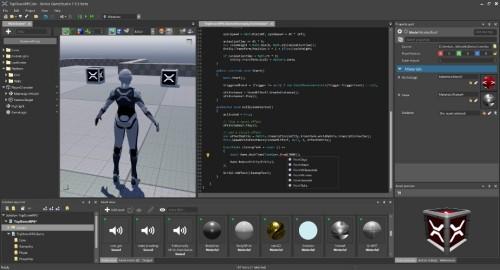 | Stride - an open-source C# game engine for realistic rendering and VR. The engine is highly modular and aims at giving game makers more flexibility in their development. Stride comes with an editor that allows you to create and manage the content of your games or applications visually and intuitively. |
Operating Systems
Ubuntu Linux – the most popular Linux distro. Full GUI, full multitasking, easy package installer, free. A bonus is that it will run on older hardware and may delay having to upgrade to new hardware to run Windows 7. It also has a Netbook Remix version especially for netbook computers (hint: Run the Remix version with the standard desktop to get a normal view with movable windows versus the Remix version which has everything running full screen).
Linux Mint – third most popular Linux distro. An Ubuntu-based distribution whose goal is to provide a more complete out-of-the-box experience by including browser plugins, media codecs, support for DVD playback, Java and other components. It also adds a custom desktop and menus, several unique configuration tools, and a web-based package installation interface. Linux Mint is compatible with Ubuntu software repositories.
Manjaro Linux – based on the rolling release distro Arch Linux, this distro is becoming very popular. It has various flavours of desktop UI to choose from.
CentOS – a community-supported, mainly free software operating system based on Red Hat Enterprise Linux. It exists to provide a free enterprise class computing platform and strives to maintain 100% binary compatibility with its upstream distribution. CentOS stands for Community ENTerprise Operating System.
Vinux Linux – especially for visually impaired users. Project appears to be dormant though.
Android – an operating system for mobile devices such as cellular phones, tablet computers and netbooks. Android was developed by Google and based upon the Linux kernel and GNU software. It was initially developed by Android Inc. (a firm later purchased by Google) and lately by the Open Handset Alliance.
Jolicloud – interesting option for a netbook OS.
DoudouLinux – is specially designed for children to make computer use as easy and pleasant as possible for them (and for their parents too!
RT-Thread Smart – a new open source operating system for embedded systems. RT-Thread Smart is working to open source the world of IoT and edge computing.
Television / Broadcasting / Streaming
FreeGuide – FreeGuide is a TV guide program. It allows you to find programmes you are interested in quickly, and ignore the rest. Works well on Linux but the Windows apps seems to have some problem. Note for SA channels you should download my fixed config file and copy it over the existing one under your Linux home directory in /home/yourloginnamename/.freeguide/xmltv-configs. To ignore certain channels you need to open this file with a text editor (eg. gedit) and put a # at the beginning of any lines to ignore. The days option at the bottom of the file can be 1, 7 or 14 days. After saving the file, just click on download listings in the Freeguide program to update your listing. To clean out any existing days that are already downloaded you could delete all the “days” files in .freeguide directory and then download the listings again.
LinuxMCE – is a whole home automation suite that controls everything from lighting, air conditioning, cameras, media entertainment system, telephony, security and much more. It is best to view the FAQ at https://wiki.linuxmce.org/index.php/Frequently_Asked_Questions to get a better idea of what all it can do.
MythTV – a free home entertainment application with a simplified “10-foot user interface” design for the living-room TV, and turns a computer with the necessary hardware into a network streaming digital video recorder, a digital multimedia home entertainment system, or Home Theater Personal Computer. It can be considered as a free and open source alternative to Tivo or Windows Media Center. It runs on various operating systems, primarily Linux/Mac/FreeBSD.
Boxee – a cross-platform freeware home theater PC (HTPC) program with a 10-foot user interface and social networking features designed for the living-room TV.
WebcamStudio For GNU/Linux creates a virtual webcam that can mix several video sources together and can be used for live broadcasting over Bambuser, UStream or Stickam. On this virtual webcam, you can broadcast your desktop, your webcam, a movie, some text, IRC channels, RSS Feed, animations, images or all of them at the same time.
CamStudio – able to record all screen and audio activity on your computer and create industry-standard AVI video files and using its built-in SWF Producer can turn those AVIs into lean, mean, bandwidth-friendly Streaming Flash videos (SWFs).
UStream – the leading live interactive broadcast platform. Anyone with an internet connection and a camera can start engaging with their family, friends or fans any time, anywhere. Millions of Ustream users view and broadcast a wide variety of content, from high school sporting events to red carpet movie premières. Notable Ustream broadcasts include major political events, concerts, conferences, movie premières, talk shows, sporting events, interactive games, and personal milestones.
OBS Studio – open source software designed for capturing, compositing, encoding, recording, and streaming video content, efficiently. It is broadly used by numerous YouTubers for both prerecorded as well as live stream videos. I use it myself for producing my own published videos.
GPU Screen Recorder – GPU Screen Recorder is a screen recorder for Linux similar to ShadowPlay for Microsoft Windows, that makes use of the GPU to record the screen, having a minimal impact on the system performance (very low CPU usage). According to its developer, “this is the fastest screen recording tool for Linux”. It currently only supports X11 sessions (Wayland and Xwayland are not supported).
Jellyfin – a Free Software Media System that puts you in control of managing and streaming your media (movies, TV series, music, ebooks, etc). It is an alternative to the proprietary Emby and Plex, to provide media from a dedicated server to end-user devices via multiple apps.
Radarr – a movie collection manager for Usenet and BitTorrent users. It can monitor multiple RSS feeds for new movies and will interface with clients and indexers to grab, sort, and rename them. It can also be configured to automatically upgrade the quality of existing files in the library when a better quality format becomes available.
Government
Sunlight Labs – a non-profit, non partisan Washington, DC based organization focused on digitization of government data and making tools and websites to make it easily accessible. Sunlight Labs is an open source community of thousands dedicated to using technology to transform government. They focus on transparency – the idea that government can be more effective, more honest, and more accountable when it makes data about its process, operations, and influences available to the public.
OpenTripPlanner – an open source platform for multi-modal and multi-agency journey planning. It follows a client-server model, providing several map-based web interfaces as well as a REST API for use by third-party applications. OTP relies on open data standards including GTFS for transit and OpenStreetMap for street networks.
OneBusAway – transit route and scheduling software using GTFS open standards – has Android and iOS apps for citizens to use, as well as smart assistent integration like Alexa, Google Assistent and Siri.
South African Government Open Source website – about to be reborn from Nov/Dec 2019.
Open Voting Consortium – a not-for-profit organization dedicated to the development, maintenance, and delivery of trustable and open voting systems for use in public elections.
CONSUL – the most complete citizen participation tool for an open, transparent and democratic government. In use in 35+ countries.
Health
Medical – a free, centralized Health and Hospital Information System that provides the following functionality: Electronic Medical Record (EMR), Hospital Information System (HIS), Health Information System.
Tidepool – open source diabetes software makes diabetes software more accessible, but also their employee handbooks and kanban boards. Tidepool has developed an ecosystem of products that integrate diabetes data from over 60 different insulin pumps, blood glucose meters, and continuous glucose monitors into a single, intuitive user interface. People with diabetes, their care teams, and clinicians can view and analyse data, then discuss potential treatment adjustments.
COVID-19 Hospital Impact Model for Epidemics (CHIME) – an open source application built by data scientists at Penn Medicine at the University of Pennsylvania. The online tool allows hospitals to better understand the impact the virus will have on hospital demand. Hospital leaders can use CHIME to “get more informed estimates of how many patients will need hospitalization, ICU beds, and mechanical ventilation over the coming days and weeks.” A user can input how many patients are currently hospitalized and see, based on other variables, how demand might increase over the coming days.
Locale.ai Maps – track the number of cases help us visualize the relative scale and spread of COVID-19. Locale.ai created an open source, interactive visualization of all known cases of COVID-19. The map provides live updates with new data as it becomes available.
The data is retrieved via an open source API created by GitHub user ExpDev07 that queries an open source dataset from John Hopkins University. The John Hopkins dataset (an aggregate of more than a dozen other sources) is currently the most popular COVID19-related project on GitHub.
City of Tokyo’s COVID-19 task force website – created a comprehensive website that “aims to allow Tokyo residents, companies with offices in Tokyo, and visitors to Tokyo to grasp the current situation and take measures and precautions accordingly.” Unlike many other cities, Tokyo decided to open source its site. The project boasts contributions by more than 180 different users, and at least three other cities in Japan (Nagano, Chiba, and Fukuoka City) remixed the site. The project is an example of how cities can better serve their citizens by building openly.
More open open source projects related to Covid-19 here.
GNU Health – a free Health and Hospital Information System with the following functionality: Electronic Medical Record (EMR), Hospital Information System (HIS), Health Information System.
FreeMED – an opensource electronic medical record and practice management system which has been developed since 1999.
GNUmed – its goal is to produce and to make available free (as in liberated) open source software to help providers better document, understand, plan, and manage their patients’ health, and health care delivery, at longitudinal points of care.
MEDILIG – Medical Life Guard: An EHR/EMR cross-platform software for the design, implementation, and use of autonomous, open, database models for multilingual medical knowledge management systems from primary care to continuing care.
OpenEMR – a Free and Open Source electronic health records and medical practice management application that can run on Windows, Linux, Mac OS X, and many other platforms. OpenEMR is ONC Complete Ambulatory EHR certified and is one of the most popular open source electronic medical records in use today.
Office Manager – encompassing office management healthcare software for medical practices, doctors groups, DMEs, retailers, etc. It does User/patient management, point of sale, scheduling, sign-in, inventory, insurance claims, accounting, etc.
OpenMRS – a software platform and a reference application which enables design of a customized medical records system with no programming knowledge (although medical and systems analysis knowledge is required). It is a common platform upon which medical informatics efforts in developing countries can be built.
VISTA – an open source medical records system. It keeps track of all of information concerning a patient’s care – no matter where in the country they go. Medications, pharmacies, doctor visits, dates, diagnosis.
OSCAR EMR – a proven Electronic Medical Record (EMR) designed to help improve health care from individual to population health levels while reducing costs. OSCAR, which currently supports over 1.5 million patients across Canada, offers an extremely versatile, browser-based, EMR with high clinical functionality and advanced research capabilities.
THIRRA – short for “Telehealth and Health Informatics in Rural & Remote Areas,” THIRRA is an IDRC-funded project that provides EHR capabilities and also allows government officials to track outbreaks of infectious diseases. It’s currently being used in Malaysia, Nepal, the Philippines and Sri Lanka.
ZEPRS – Zambia Electronic Perinatal Record System (ZEPRS) is being used by clinics and the University Teaching Hospital in Lusaka, Zambia to improve patient care. The University of Alabama Birmingham (UAB) Center for Research in Women’s Health (CRWH), RTI, and the Center for Infectious Disease Research in Zambia (CIDRZ) developed ZEPRS with local medical expertise and project engagement from the Lusaka Urban Health District, Central Board of Health and funding support from the Bill & Melinda Gates Foundation.
OpenBoxes – Open-source supply chain management system designed to manage supplies and medications for healthcare facilities and disaster relief efforts.
OpenLMIS – a supply chain management tool for the healthcare sector, but it was specifically designed for use in low-resource areas in Africa to ensure medications and medical supplies get to patients in need. Its API-driven approach enables users to customize and extend OpenLMIS while maintaining a connection to the common codebase.
OpenClinic GA – an open source integrated hospital information management system covering management of administrative, financial, clinical, lab, x-ray, pharmacy, meals distribution and other data. Extensive statistical and reporting capabilities. 17 implementations in Rwanda, 5 in DRC, 4 in Mali and 5 in Burundi covering hospitals with 5 up to 700 users. Country specific localizations for Albania, Bangladesh, Belgium, Brazil, Burundi, Congo-Brazzaville, Democratic Republic of the Congo, Ivory Coast, Kenya, Mali, Uganda, Rwanda, Sri Lanka and Tanzania. Follow-up OpenClinic implementations on http://www.globalhealthbarometer.net.
Bika LIMS – combines web content management and workflow processing for a one-stop ISO 17025 ready web-based LIMS (Laboratory Information Management System). One of the development sponsosr is the Department of Trade and Industry in the Republic of South Africa.
3D Slicer – offers DICOM file viewing, interactive segmentation, volume rendering and other capabilities. It can work with images from MRI, CT, US, nuclear medicine, and microscopy.
AMIDE – a completely free tool for viewing, analyzing, and registering volumetric medical imaging data sets.
ANTs (Advanced Normalization Tools) – helps doctors and researchers make maps of brains.
BioImageXD – a free open source software package for analyzing, processing and visualizing multi-dimensional microscopy images. It’s a collaborative project, designed and developed by microscopists, cell biologists and software engineers from the Universities of Jyväskylä and Turku in Finland, Max Planck Institute CBG in Dresden, Germany and collaborators worldwide.
OsiriX – downloaded more than 1,000 times every day, OsiriX claims to be “the most widely used DICOM viewer in the world.”
Open Source Malaria project – is trying a different approach to curing malaria. Guided by open source principles, everything is open and anyone can contribute.
vetclinic – web based Veterinary Clinic Management software. Includes clients, pets, inventory (especially medicine), appointments, document management, invoicing, grooming, and boarding.
Kailona – an extensible, customizable and secure platform for your private electronic health records (EHR). It is available as Nextcloud application. It helps you to organize, manage and visualize your behavioral and health data such as activities, vital signs, blood pressure, etc. powered by the awesome features of HIPAA and GDPR compliant Nextcloud.
Wikipedia list of open source healthcare systems
Fitness and Exercise
wger – Workout Manager is a free, open source web application that helps you manage your personal workouts, weight and diet plans and can also be used as a simple gym management utility. It offers a REST API as well, for easy integration with other projects and tools.
Endurain – a self-hosted fitness tracking service that operates much like Strava but allows users to have complete control over their data and the hosting environment. The application’s frontend is built using Vue.js and Bootstrap CSS. On the backend, it leverages Python FastAPI, Alembic, SQLAlchemy, stravalib and gpxpy for seamless integration with Strava and .gpx file import.
Fit.ly – web analytics for endurance athletes. It states data sources such as Oura, Withings, Stryd, Peloton, Fitbod and Nextcloud, and Spotify.
Workout Tracker – self-hosted workout tracking web application for personal use (or family, friends), geared towards running and other GPX-based activities.
FitTrackee – self-hosted web application allowing tracking of outdoor activities (workouts) from GPX files, with data on your own server. Also works with other mobile apps to store workouts data locally, for export into a GPX file.
trk – self-hosted training diary and activities tracker in PHP. Keep your activities history under your control. Routes, statistics, photos on your own server and in your own database. Has integration with Strava.
OpenMoves – self-hosted open source alternative to Movescount, with Strava import.
Computer Aided Design (CAD)
Sweet Home 3D – a free interior design application that helps you place your furniture on a house 2D plan, with a 3D preview. Runs under Windows 98 to Vista, Mac OS X, various Linux systems and Solaris.
FreeCAD – a general purpose Open Source 3D CAD/MCAD/CAx/CAE/PLM modeler, aimed directly at mechanical engineering and product design but also fits in a wider range of uses around engineering, such as architecture or other engineering specialties. It is a feature-based parametric modeler with a modular software architecture which makes it easy to provide additional functionality without modifying the core system.
Archimedes – a computer aided design (CAD) solution focusing on architectural design. While the current version of Archimedes may not be mature enough for all – this project is very promising. It already has many of the most common and advanced drawing features you will find in a commercial CAD solution. An alternative for AutoCAD.
BRL-CAD – a cross-platform CAD tool that dates back to 1979, although it would take 25 years for the source code to be released under an open source license. In fact, BRL-CAD is so old that it has been credited with being the oldest source code repository of an application currently in active development. Originally developed by Mike Muuss at the Army Research Laboratory, BRL-CAD is been used for decades by the United States military for modeling weapon systems, but it also has been used for much more everyday design tasks, from academic to industrial design to health applications.
LibreCAD – a CAD program that is designed to work across Windows, Mac, and Linux alike. A fork of QCAD (mentioned below), LibreCAD has an interface that will look familiar to AutoCAD users, and by default it uses the AutoCAD DXF format for importing and saving, though it can use other formats as well.
KiCad EDA – a Cross Platform and Open Source Electronics Design Automation Suite. KiCad can be considered mature enough to be used for the successful development and maintenance of complex electronic boards. KiCad does not present any board-size limitation and it can easily handle up to 32 copper layers, up to 14 technical layers and up to 4 auxiliary layers. KiCad can create all the files necessary for building printed boards, Gerber files for photo-plotters, drilling files, component location files and a lot more.
Dust3D – cross-platform open source appliaction to very easily make 3D models from scratch. It helps you create a 3D watertight model in seconds. Use it to speed up your character modeling in game making, 3D printing, and so on.
Home Automation
Home Assistant – an open-source home automation platform running on Python 3. Track and control all devices at home and automate control. Perfect to run on a Raspberry Pi or even in a Docker container. See my video about it at https://www.youtube.com/watch?v=dlvlhou70VA.
Calaos – a full-stack home automation platform, including a server application, touchscreen interface, web application, native mobile applications for iOS and Android, and a preconfigured Linux operating system to run underneath.
Domoticz – a home automation system with a pretty wide library of supported devices, ranging from weather stations to smoke detectors to remote controls. It is designed with an HTML5 frontend, making it accessible from desktop browsers and most modern smartphones, and is lightweight, running on many low-power devices like the Raspberry Pi.
MisterHouse – uses Perl scripts to monitor anything that can be queried by a computer or control anything capable of being remote controlled. It responds to voice commands, time of day, weather, location, and other events to turn on the lights, wake you up, record your favorite TV show, announce phone callers, warn that your front door is open, report how long your son has been online, tell you if your daughter’s car is speeding, and much more.
OpenHAB (short for Open Home Automation Bus) – one of the best-known home automation tools among open source enthusiasts, with a large user community and quite a number of supported devices and integrations.
OpenMotics – a home automation system with both hardware and software under open source licenses. It’s designed to provide a comprehensive system for controlling devices, rather than stitching together many devices from different providers. Unlike many of the other systems designed primarily for easy retrofitting, OpenMotics focuses on a hardwired solution.
EmonCMS – a powerful open-source web-app for processing, logging and visualising energy, temperature and other environmental data.
WeeWX – a free, open source, software program, written in Python, which interacts with your weather station to produce graphs, reports, and HTML pages. It can optionally publish to weather sites or web servers. It uses modern software concepts, making it simple, robust, and easy to extend.
OpenEVSE – open source software and hardware for EV electric vehicle chargers.
Miscellaneous
Gramps – a Free Software Project for Genealogy, offering a professional genealogy program, and a wiki open to all. It is a community project, created, developed and governed by genealogists. GRAMPS currently runs on Linux, MAC OS X, and Windows. Guides for installation on BSD and Solaris are available.
Webtrees – is the web’s leading online collaborative genealogy application. It works from standard GEDCOM files, and is therefore compatible with every major desktop application. It has full editing capabilities, full privacy functions, and supports imedia such as photos and document images. As an online program, it fosters extended family participation and good ancestral recording habits, as it simplifies the process of collaborating with others working on your family lines.
Sahana – a free and open source flexible, modular platform for rapidly deploying information management systems for disaster management and humanitarian use cases.
Timekpr-nExt – intended for young children, it enables you to limit computer usage for certain accounts based on the time of day, number of hours a day, week or month. You may also set time interval to force the account user to take break.
DanceCues – can help you plot out your best dance moves ahead of time. It’s suitable for professional choreographers and makes it much easier to create cue sheets than using a word processor.
iDiet – diet management software that will help people choose, customize and follow their diet. Several supported diets ( eg. Atkins, Summer Fresh,The Zone, Weight Watchers, Body for Life etc ) with details for every one of them.
Gourmet – helps you organize your recipes. It imports recipes from multiple formats, including websites, plus it generates shopping lists and counts the calories in the meals you’re making.
Mealie – a self-hosted intuitive and easy to use recipe management app. It’s designed to make your life easier by being the best recipes management experience on the web and providing you with an easy to use interface to manage your growing collection of recipes.
Grocy – a web-based self-hosted open source groceries and household management solution for your home. Some of the functionality includes: Pantry inventory with expiry dates, Recipes, Shopping list grouped by category, and integrates with pantry inventory and recipes, Household chore management, Tasks, Home equipment / appliances with instruction manuals and notes for each, Battery management to track when device batteries last charged or replaced, Community contributed tools, integrations, and useful add-ons. See video about it at https://www.youtube.com/watch?v=kMpui1hw-gM.
OpenWebRx – a multi-user SDR receiver software with a web interface which will tune to various radio frequencies as wellas decoding various ham / amateur radio digital modes such as JS8Call, DMR, D-STAR, etc. You can try it out by listening to my receiver at https://openwebrx.gadgeteerza.co.za.
Open Source Poetry – an experiment in uniting the principles of open source development with the whimsy of collaborative poetry. It’s easy to participate. Make a selection from the navigation bar to begin a poem or view saved poems. Then either write or select a line and save it. Then another and another until you’re satisfied with your poem.
BibleTime – a completely free Bible study program, built for Linux, Windows, FreeBSD and Mac OS X. BibleTime contains over 200 free Bible texts, commentaries, dictionaries and books, provided by the Crosswire Bible Society via the SWORD programming library. See also Xiphos.
Noor – a program written in Python for viewing Quran.
Gnaural – an opensource programmable auditory binaural-beat generator, implementing the principle described in the October 1973 Scientific American article “Auditory Beats in the Brain” by Gerald Oster. Binaural beats can facilitate meditation.
Celtx – Create scripts, storyboards, breakdowns, schedules, budgets, and cast & crew reports for your production. The desktop software source code is available to download from the site.
Categorised list of open source – if you really can’t anything of use above, this other site also has a massive amount of software which are also arranged in categories.
Why Open Source – This paper provides quantitative data that, in many cases, open source software / free software is equal to or superior to their proprietary competition. The paper examines market share, reliability, performance, scalability, scaleability, security, and total cost of ownership; it also comments on non-quantitative issues and unnecessary fears.
The Simple Dollar – 30 Essential Pieces Of Free (and Open) Software for Windows.
Harvard Business Review – Open Source Software Hits a Strategic Tipping Point
Free Software Foundation – a non-profit with a worldwide mission to promote computer user freedom and to defend the rights of all free software users.
50 Places Where Linux is Running That You Might Not ExpectThe Ultimate Guide to Open Source Software – see.
FLOSS Weekly – FLOSS all about Free Libre Open Source Software. Join hosts Randal Schwartz and Leo Laporte every Saturday as they talk with the most interesting and important people in the Open Source and Free Software community.
SourceForge.Net – Massive repository of open source projects.
Wikipedia – Very comprehensive list of Free and Open Source Software Packages also grouped by categories.
South African Linux news feed using RSS provided by Tectonic
Osalt.com – another repository of alternative software.




